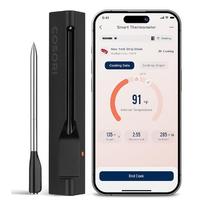The best meat thermometers in 2025: expert tested and rated
From instant-read to leave-in, here are the best cooking thermometers you can buy right now
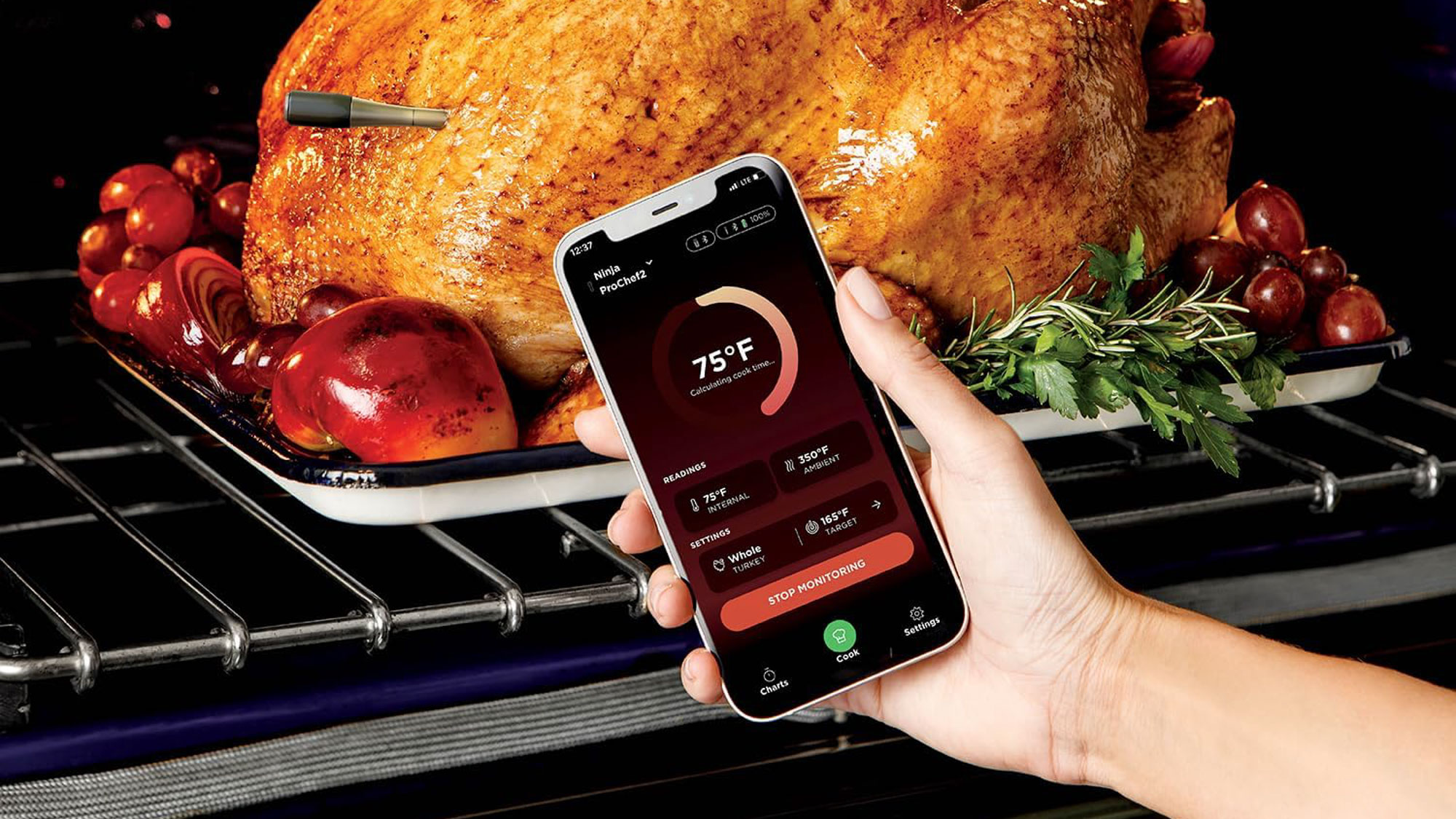
The best meat thermometers make it a breeze to cook your meat perfectly every time for a delicious (and safe) meal. But there are a lot of types to choose form, depending on how you like to cook and how many people you're catering for.
Accuracy is the most important feature, though. Which is why we put these meat thermometers to the test, to check the manufacturer's claims against our own results. That's one of the (many) reasons we rated the ThermoWorks Thermapen ONE as the best meat thermometer for most people.
It's simple, quick, and accurate, making it ideal for professionals and everyday cooking. However, if you frequently entertain and enjoy flame-grilling multiple cuts of protein, we’d recommend the Meater Pro XL, but it’s not cheap. Which is why we've also listed budget, flexible, versatile options as well.
The quick list
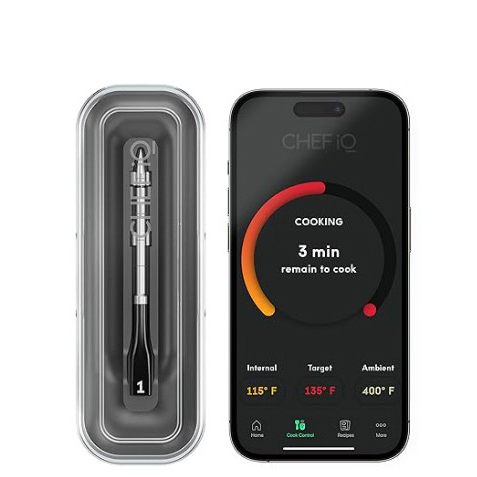
The CHEF iQ Sense smart thermometer is a handy aid in the kitchen when cooking meat to the perfect temperature. Once set up, it’s easy to use, the app guides you through the cooking process, and it even has a voice alert. it also comes in a neat storage case.
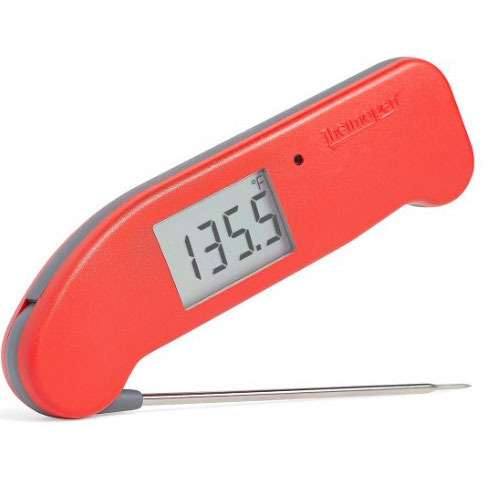
This thermometer is popular among professionals and home cooks and gives reading in one second that proved to be the most accurate in our testing. It super simple to use be used for a whole range of food items from making candy to roasting meat.
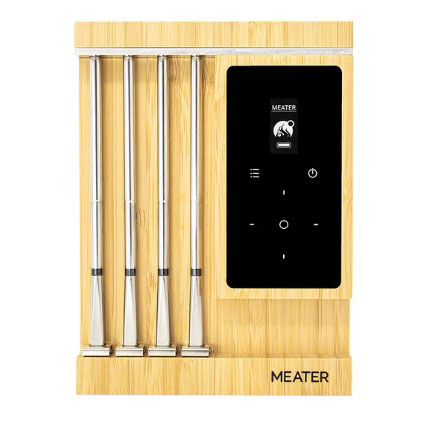
A premium meat thermometer that offers more features than simply checking the temperature of your roast. It accurately estimates the cook time and let's you know when your protein will be ready to eat. Plus, for extra flexibility it offers four probes, perfect for multiple proteins.
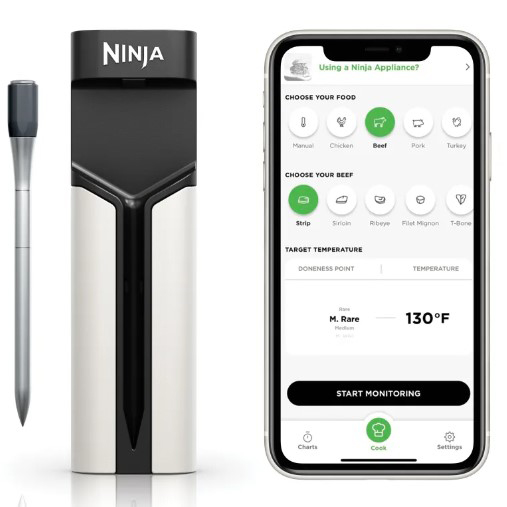
The Ninja ProChef Wireless Thermometer is a good performer. It takes the guesswork out of cooking protein to the correct temperature, and you can connect it to your other Ninja cooking appliances. It's also powered by batteries, so there's no need to rummage around for a charging cable.
Read more below
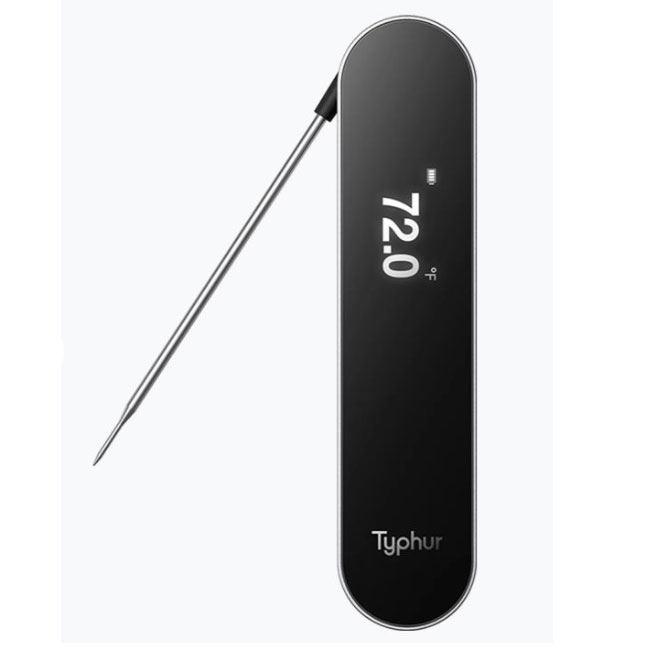
The Typhur InstaProbe gives a fast temperature reading, has an easy to read display and an attractive design, plus it's the best budget pick. It also performed well in our accuracy tests and gave a reading in less than one second.
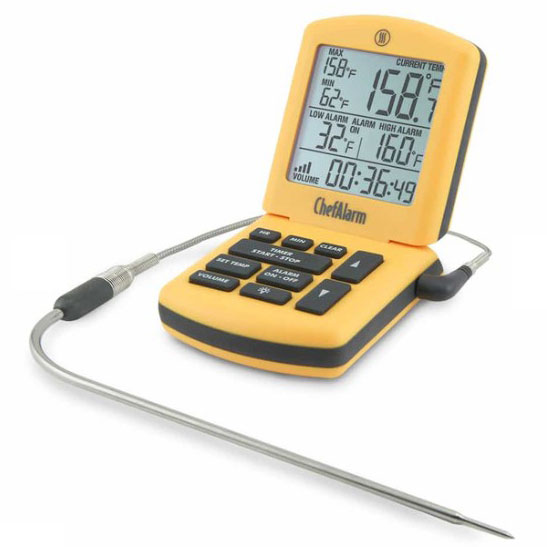
There's no need to constantly check the temperature of your meat with the ThermoWorks ChefAlarm, as it will alert you when a set temperature is reached. It takes things up a notch on its sister, the ThermaPen, and offers more functionality, plus it's easy to use.
The best meat thermometers for cooking you can buy today
Why you can trust Tom's Guide
Best meat thermometer overall
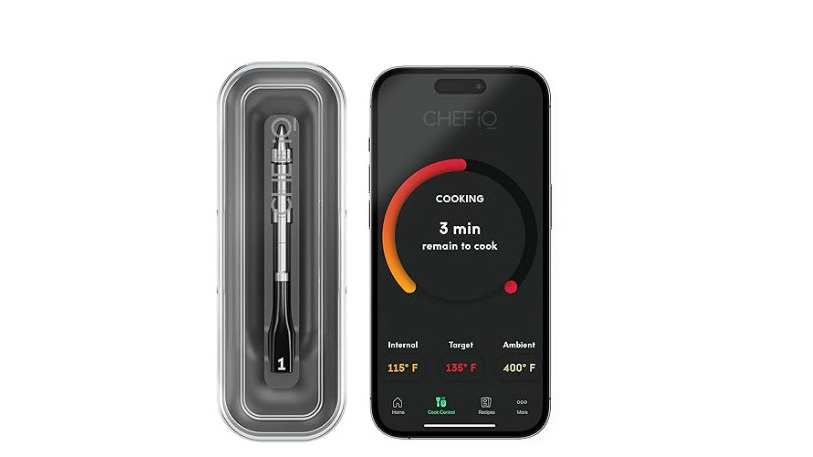
Specifications
Reasons to buy
Reasons to avoid
The CHEF iQ Sense smart thermometer is operated via an app. But don’t worry, even if you are not tech savvy, it is easy to use. It comes with one probe, which is inserted into the meat, but if you require more, you can purchase a double or triple probe set. This wireless thermometer sits securely in a black case, which is the hub.
Overall, it feels sturdy and robust. Firstly, you’ll need to charge the probe with the USB cable provided, which will take about 45 minutes. The hub itself takes longer, but once charged for 3 hours it will last for 20.
What does the hub do? It charges the probe and relays data from the probe to your smart device, where you’ll receive alerts and audio alerts via its built-in speaker. I was a bit alarmed at hearing the alerts at first, but I soon got into the swing of it.
To power up, you’ll need to depress the button on the hub for 3 seconds and connect the device to your phone, so make sure you’ve already downloaded the CHEF iQ app. Once up and running, you can set up a cooking program from the app and set the cooking time and temperature by running through the options. You can also save your regular cooking programs to favorites, to save you running through the process each time.
The app is intuitive to use, and it’s easy to monitor the progress of your cook throughout the process. You’ll receive alerts if the probe needs repositioning or if your protein needs turning, and you’ll be given a warning before the meat is ready to rest.
I trusted the CHEF iQ completely and cooked my Christmas turkey using the probe.
- Read our full CHEF iQ Sense review
Best instant-read thermometer
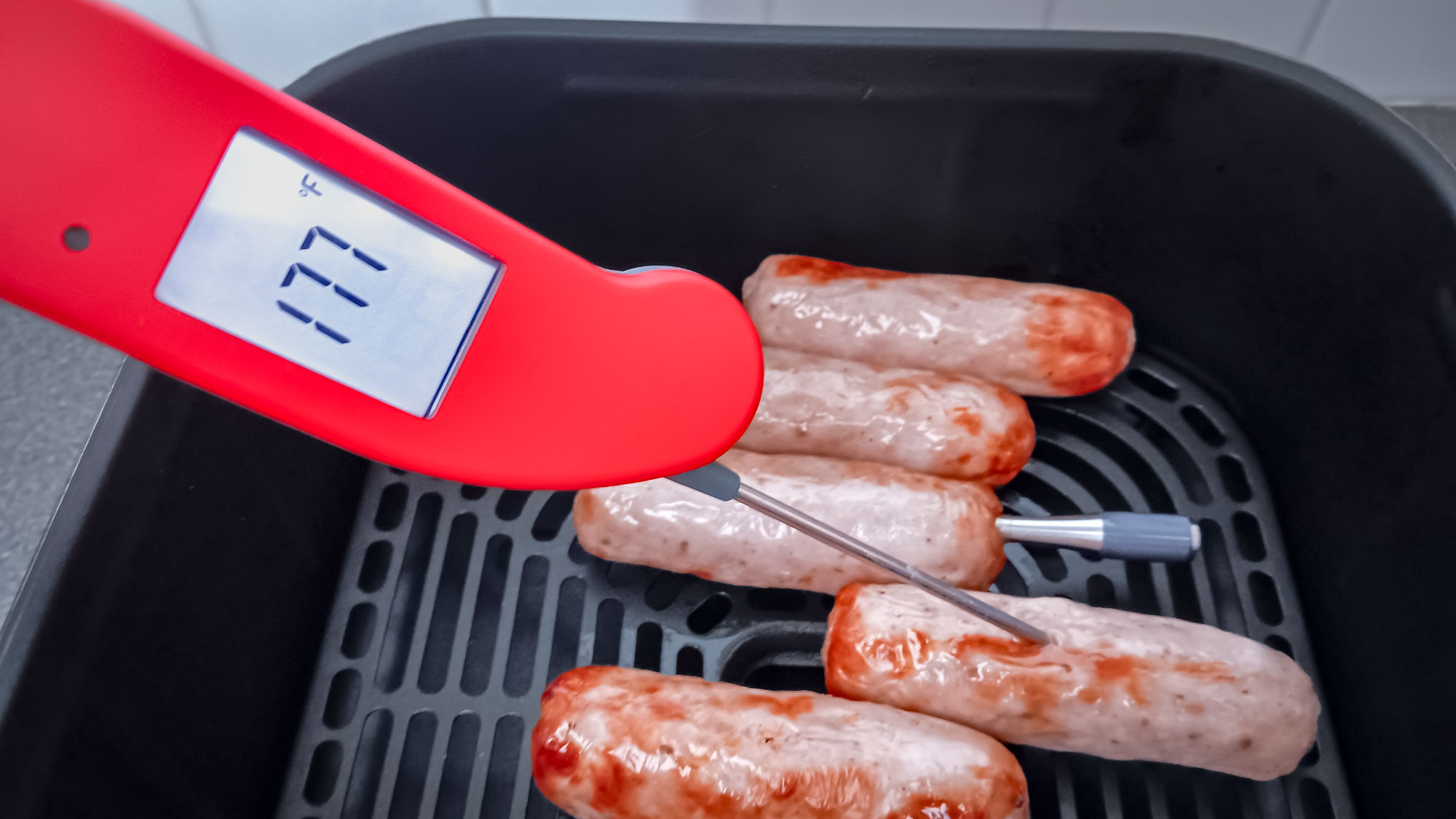
The ThermoWorks Thermapen ONE is pretty much the go-to meat thermometer for many professionals and home cooks. You pull out the probe, push it into the meat, the thermometer automatically turns on, takes the reading, then you put it away.
It's easy to use, uncomplicated and accurate. It doesn't have the same smart features as others in the market, and it won't connect to an app, but if you're looking for the best meat thermometer for most people and uses, this is it.
The probe folds away into the main body for easy storage (so you don't need to find an extra long drawer space), and the sloped design is easy to hold while you're waiting the incredibly short time it takes to measure the temperature (about one second).
And while we did our own tests to validate it's accuracy, you don't necessarily need to. The Thermapen ONE comes with its own Certificate of Calibration which demonstrates that your specific version of the thermometer has been checked for accuracy.
Because the aim is to make it simple to use (and it definitely is), the settings are a little buried. And I don't mean deep in a digital menu; literally buried beneath the battery compartment.
So, if you want to adjust the temperature unit, change the display brightness or tweak the displayed temperature to get as accurate reading as possible, you need to unscrew the compartment and reassemble before use.
Specifications
Reasons to buy
Reasons to avoid
- Read our full Thermapen ONE review
Best premium meat thermometer
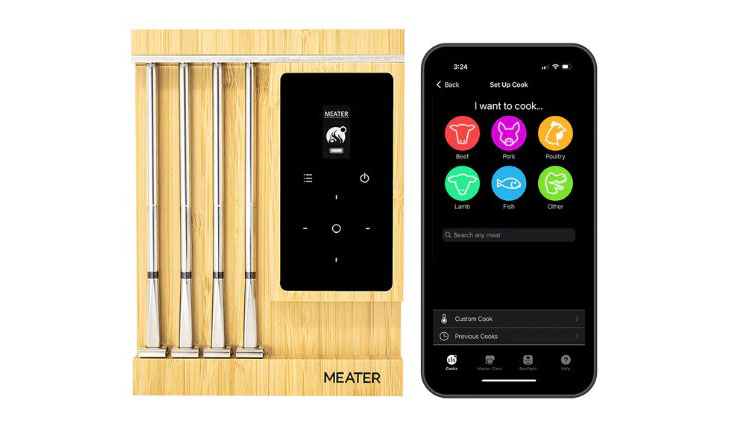
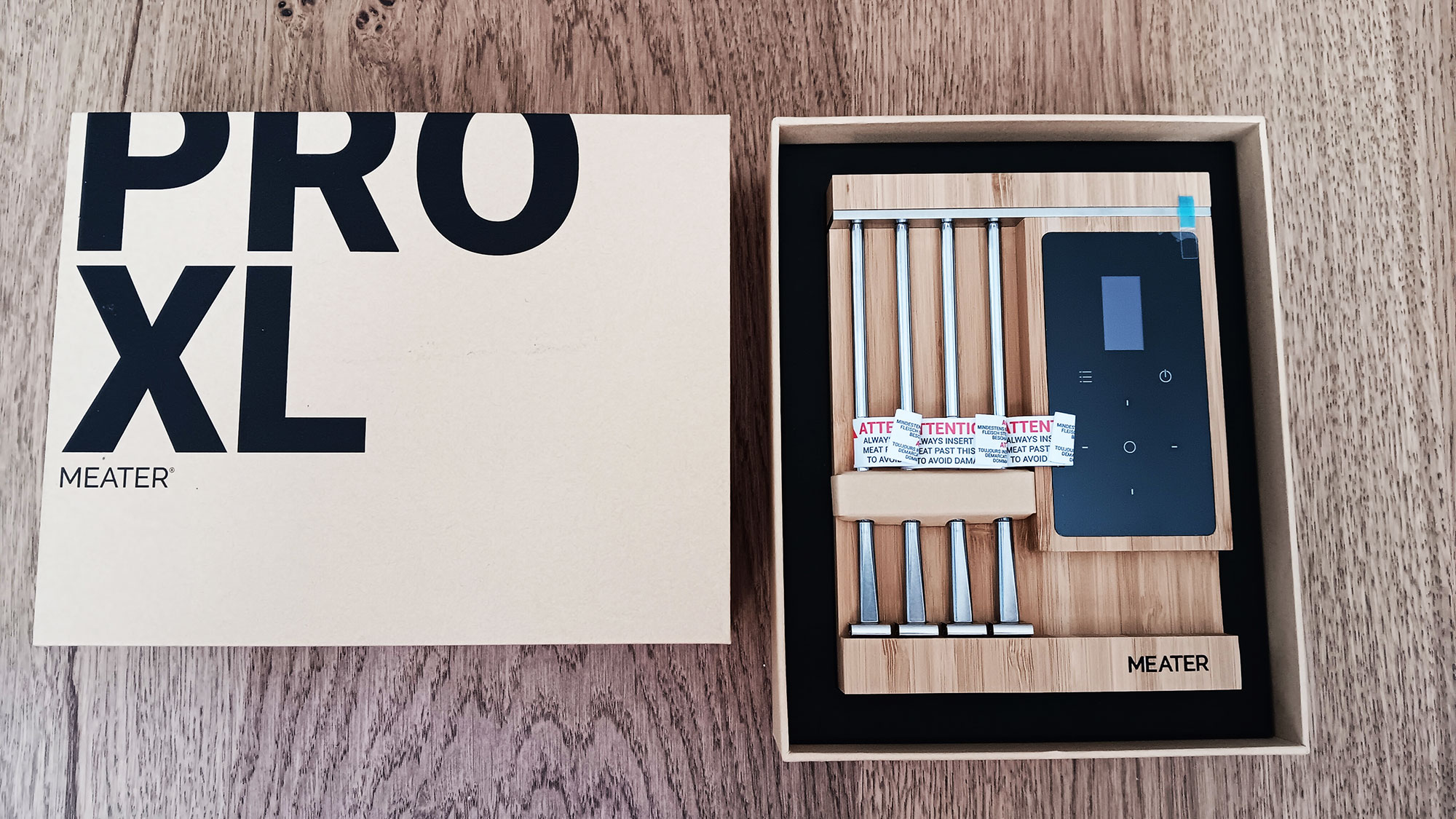
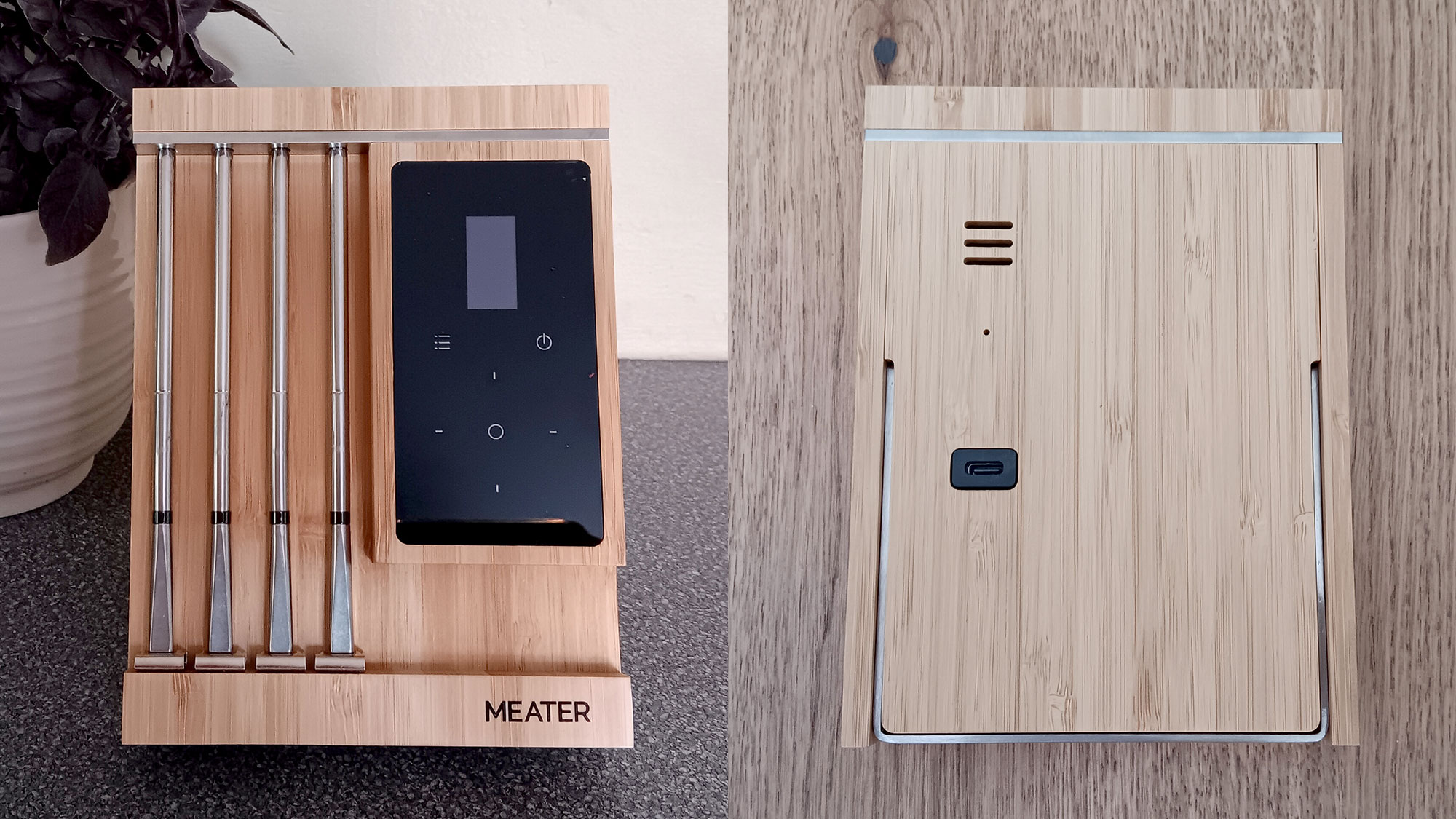
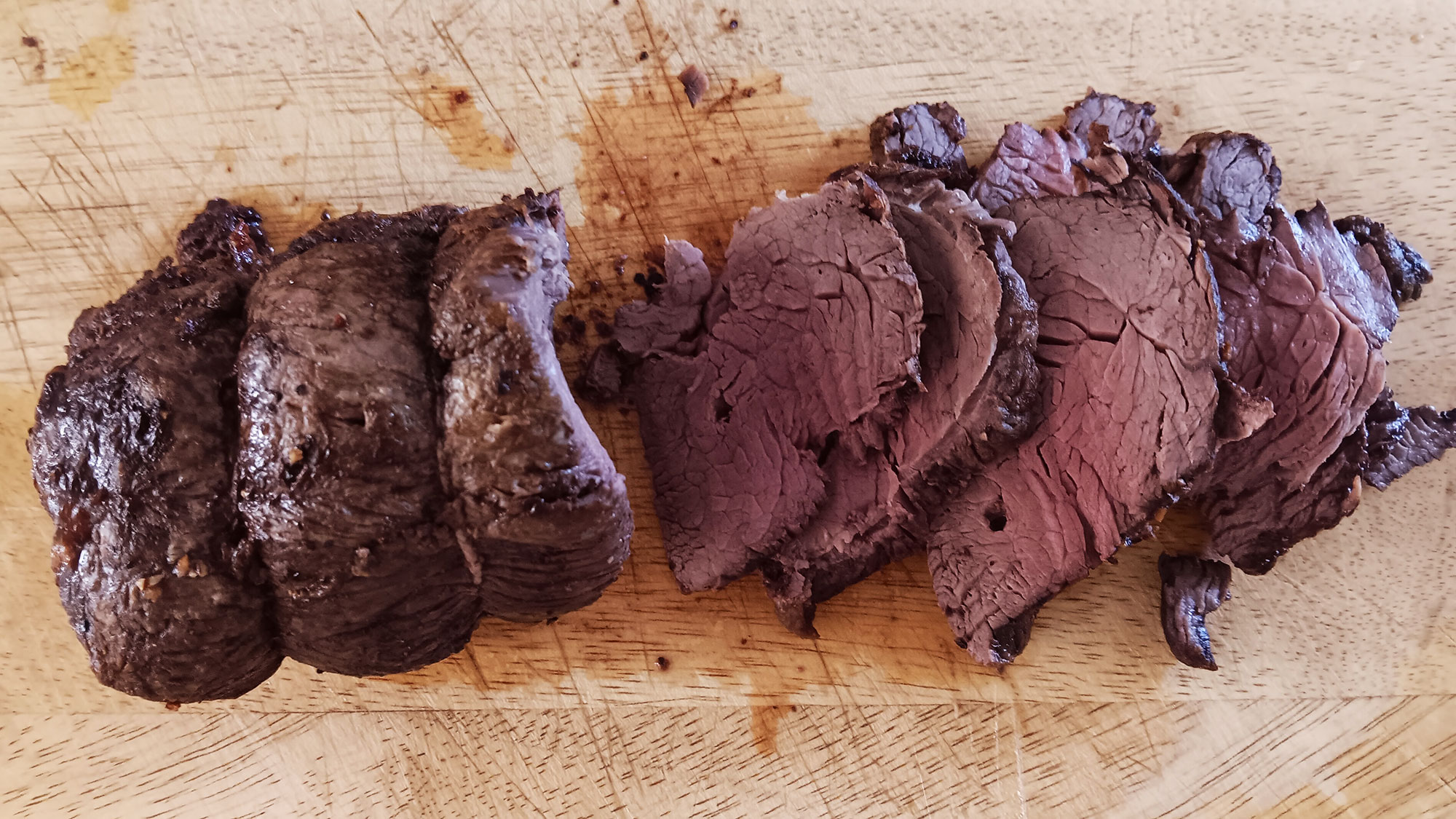
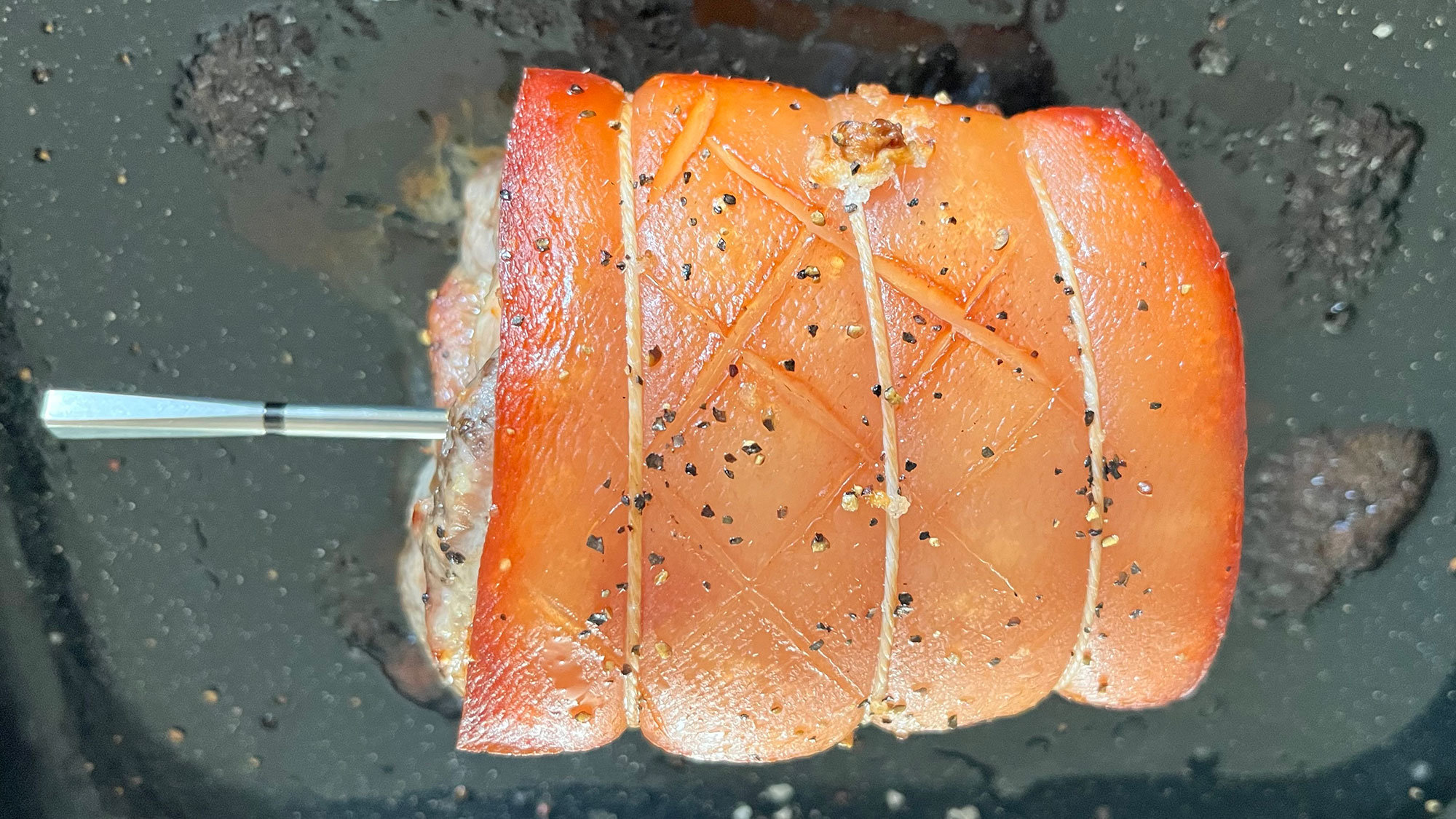
Specifications
Reasons to buy
Reasons to avoid
The Meater Pro XL is one of the most premium smart meat thermometers money can buy, but it comes at a steep price to the tune of $349, although remember that you are getting four probes instead of one. I put the meat thermometer through the wringer and was impressed with its overall ease of use and accuracy when cooking small and large proteins. I would certainly be happy to use it to cook my Christmas turkey, without a doubt that the meat would be perfectly cooked.
With four probes that can withstand up to 1000°F, this meat thermometer is ideal for those summer open flame grills when you've got multiple cuts of protein that you want to cook at the same time. And, everything is super easy and intuitive to set up on the app, although you will need an internet connection.
While I'd be happy to use the meat thermometer in its standalone mode, I found it simple and intuitive to set up and follow on the app, and I'm not particularly tech-savvy. I was able to set up a cooking program, receive alerts, and adjust the settings remotely. But although it is a smart device, I was surprised that it didn't come with some basic printed instructions to get you up and running.
This is a premium product and it looks the part. The probes are housed in a sturdy wooden casing, along with the standalone unit. It has a metal pull-up stand, so you can view the display more easily when it's in use on your countertop. It's much more sophisticated than cheaper plastic alternatives, but you pay for the privilege, and it's sure to impress your friends when you're entertaining.
The Meater Pro XL has a USB-C charging port on the reverse of the case, and once charged, I found it held its charge for 24 hours, as Meater claims. So, you can rest assured that your meat thermometer won't run out of juice while cooking your Thanksgiving Turkey.
- Read our full Meater Pro XL review
Best smart meat thermometer
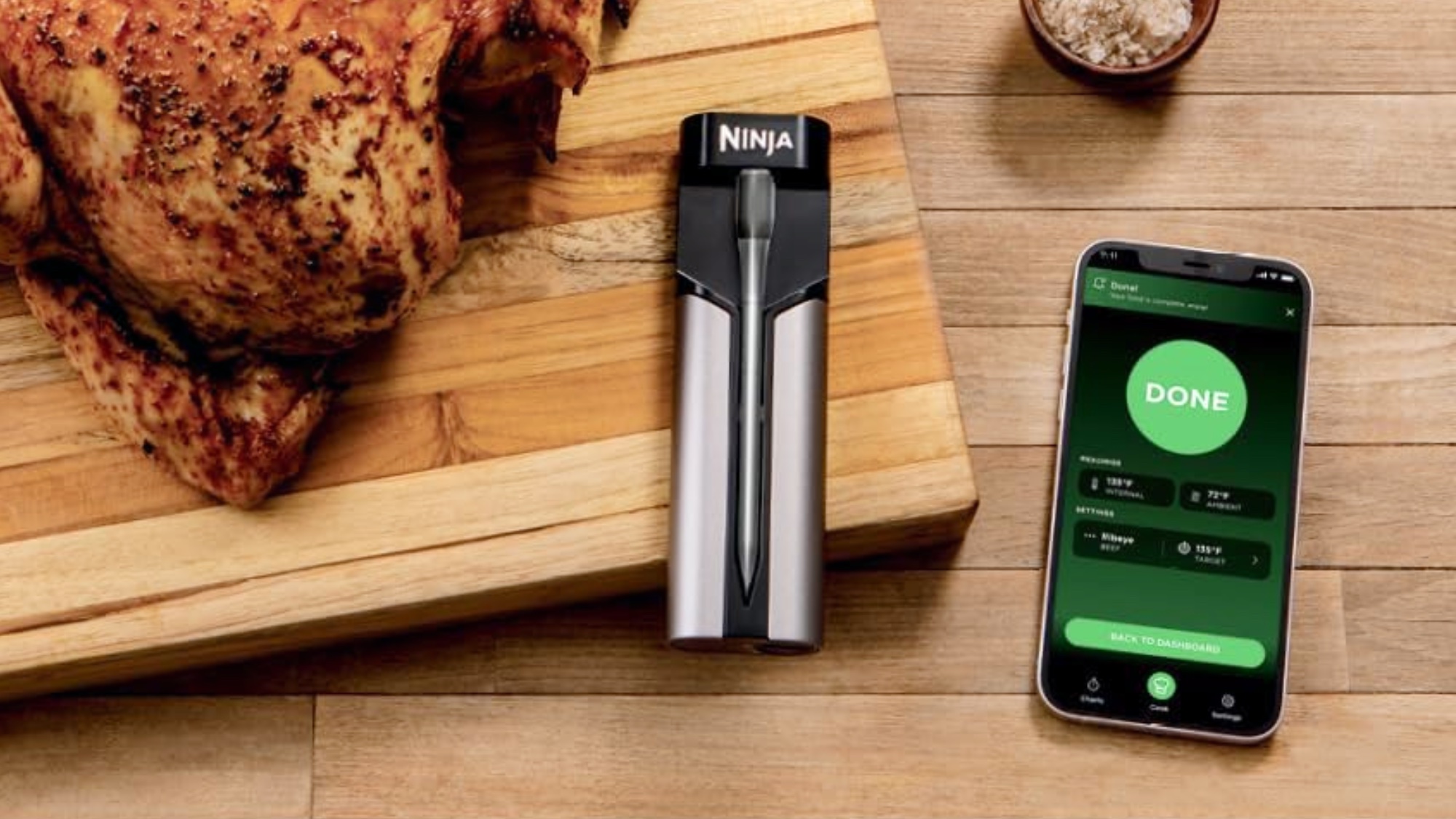
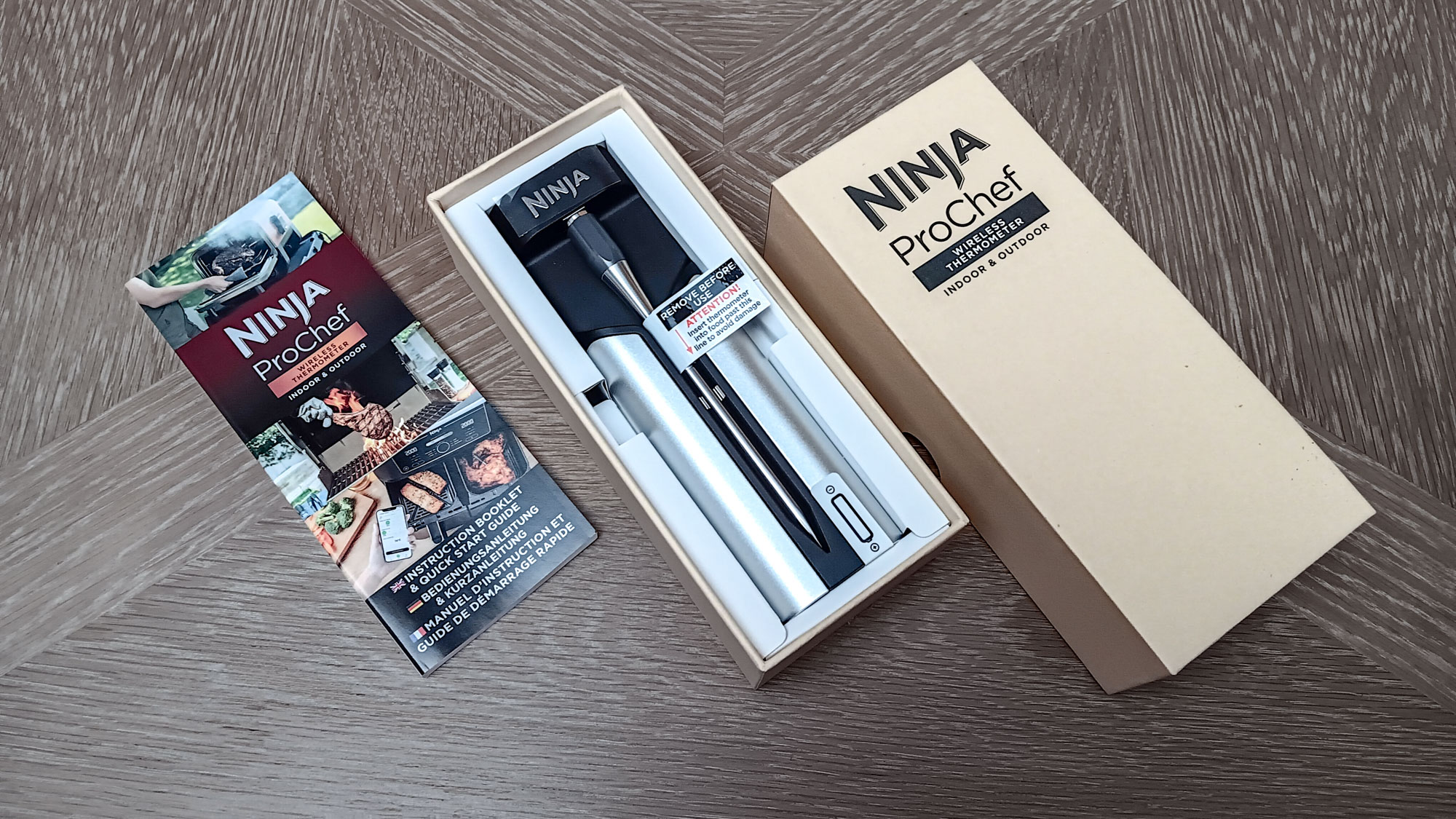
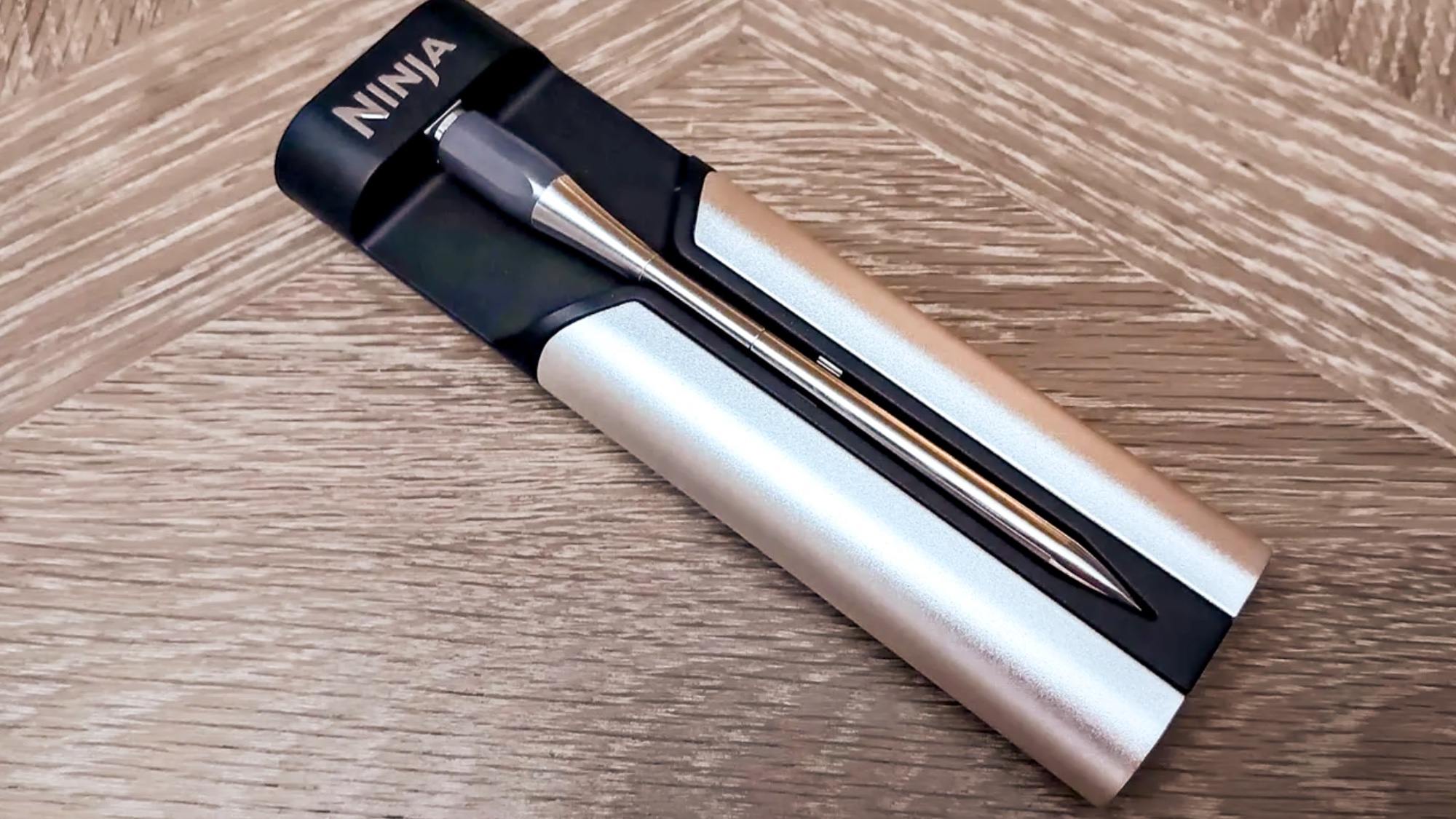
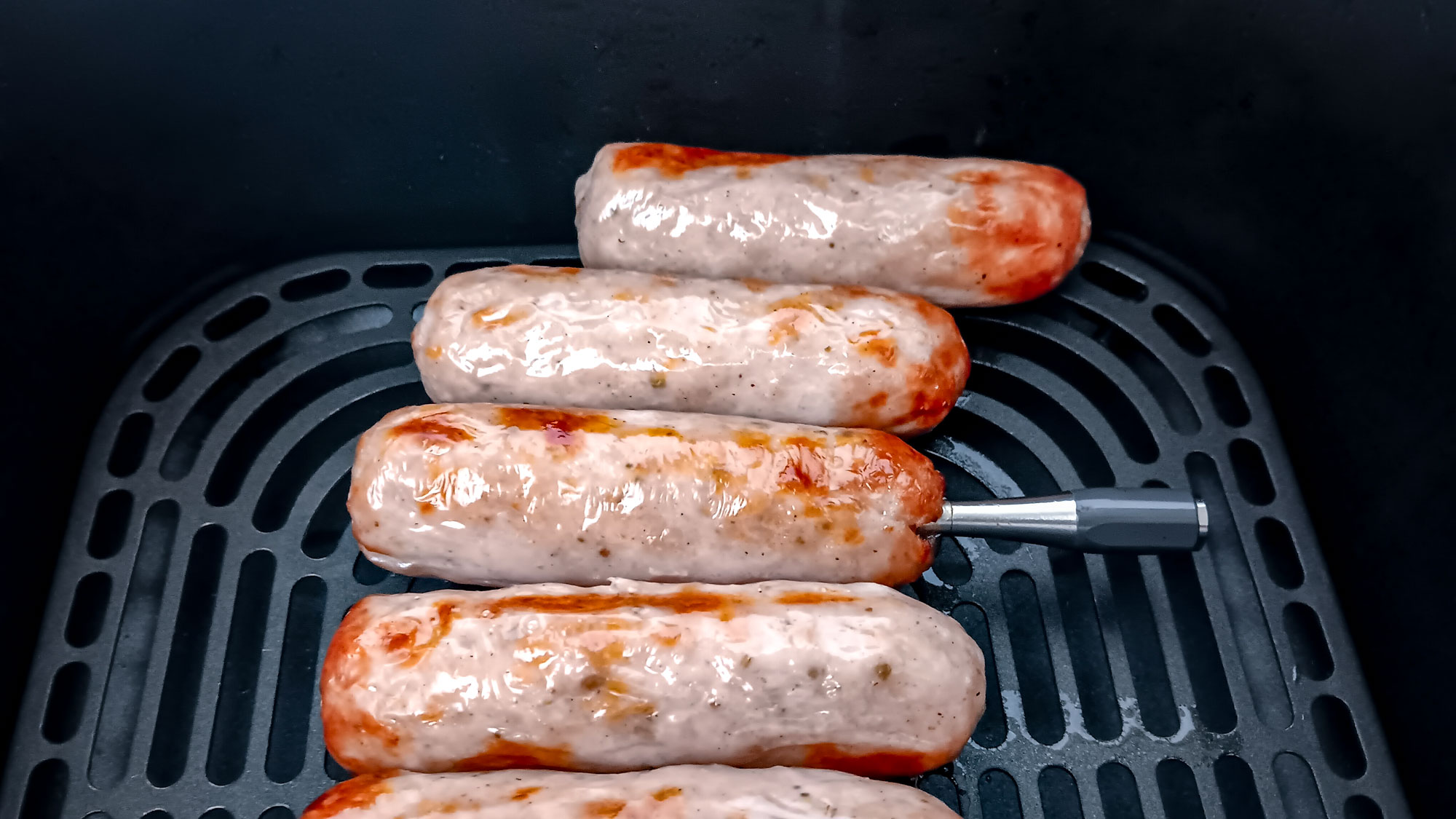
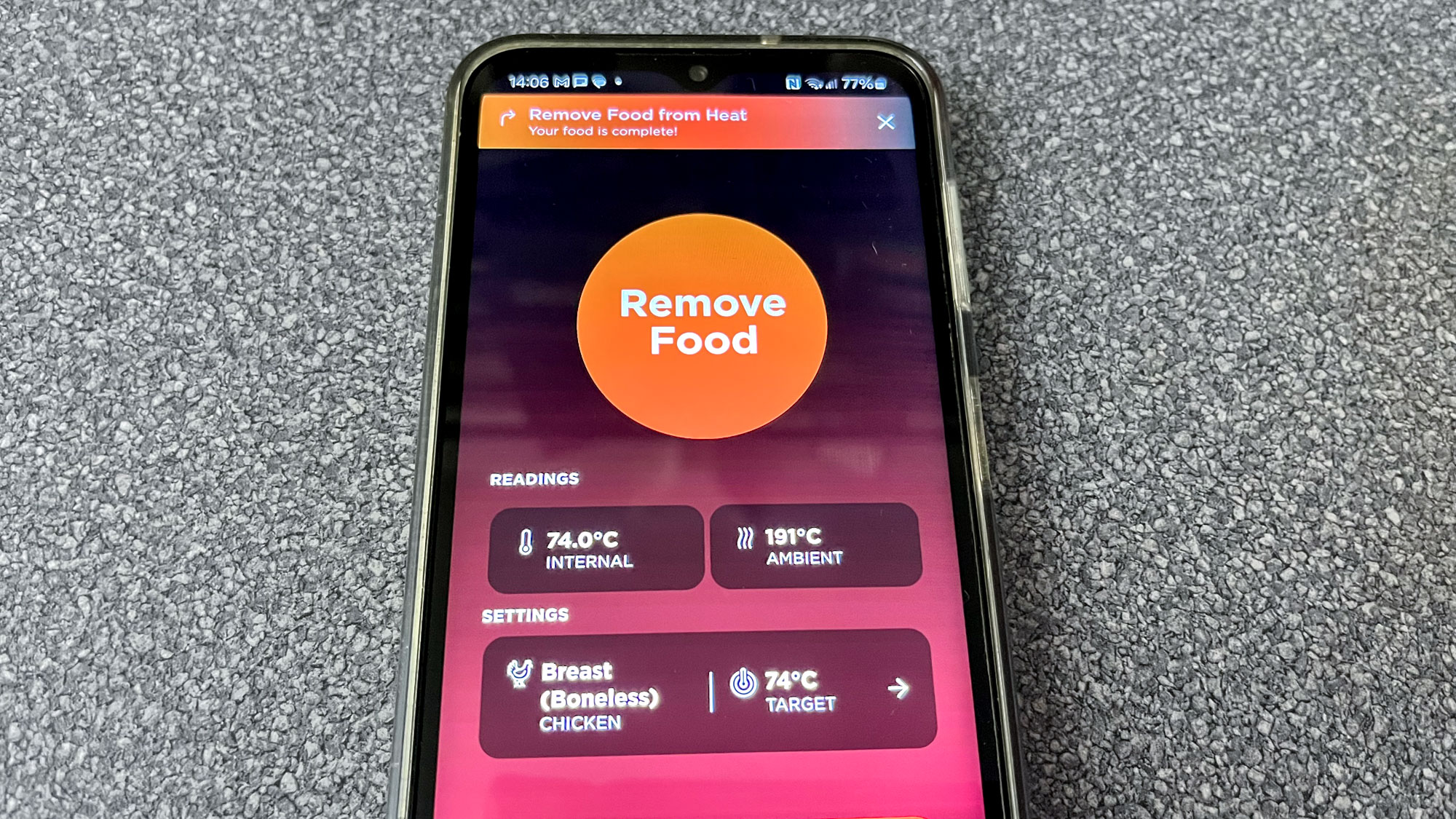
Specifications
Reasons to buy
Reasons to avoid
The Ninja ProChef wireless thermometer is operated via Ninja’s ProConnect app, which you can download from the App Store or Google Play. It’s a smart meat thermometer with a single probe that is placed into your food while it cooks.
As you would expect from Ninja, the Nina ProChef is well-packaged and is presented in an attractive natural-colored box, which you’ll discover once you remove it from the first one! The wireless thermometer sits within the box, with the probe positioned within the hub.
Before you use the probe for the first time, Ninja recommends leaving the battery in place for one hour. You’ll need to place the probe into position on the hub, as the hub holds the charge. As it runs on one AAA battery, it leaves your kitchen free of additional charging cables. You can also check how much power is gone, so you’re not left mid-cook with a thermometer that’s out of juice.
The set-up instructions are limited, but it’s fairly easy to get up and running. Once you’re all connected, you can select a cooking program for your chosen protein. However, you can also select a manual setting to choose the end temperature you require.
I enjoyed using the Ninja ProChef; it’s easy to set up, neat and compact and performs well. You can also improve the experience by pairing the device with other Ninja cooking appliances. Although I don’t have any major quibbles with the thermometer — for instance, it has an impressive heat resistance to 700°F, stays connected, and is designed to be used inside and outside — I do have a few small gripes. The printed instructions were minimal, and the resting alerts were a bit hit-and-miss. However, it’s perfectly capable of performing a good job to ensure your protein is cooked to perfection.
- Read our full Ninja ProChef Wireless Thermometer review
Best budget meat thermometer
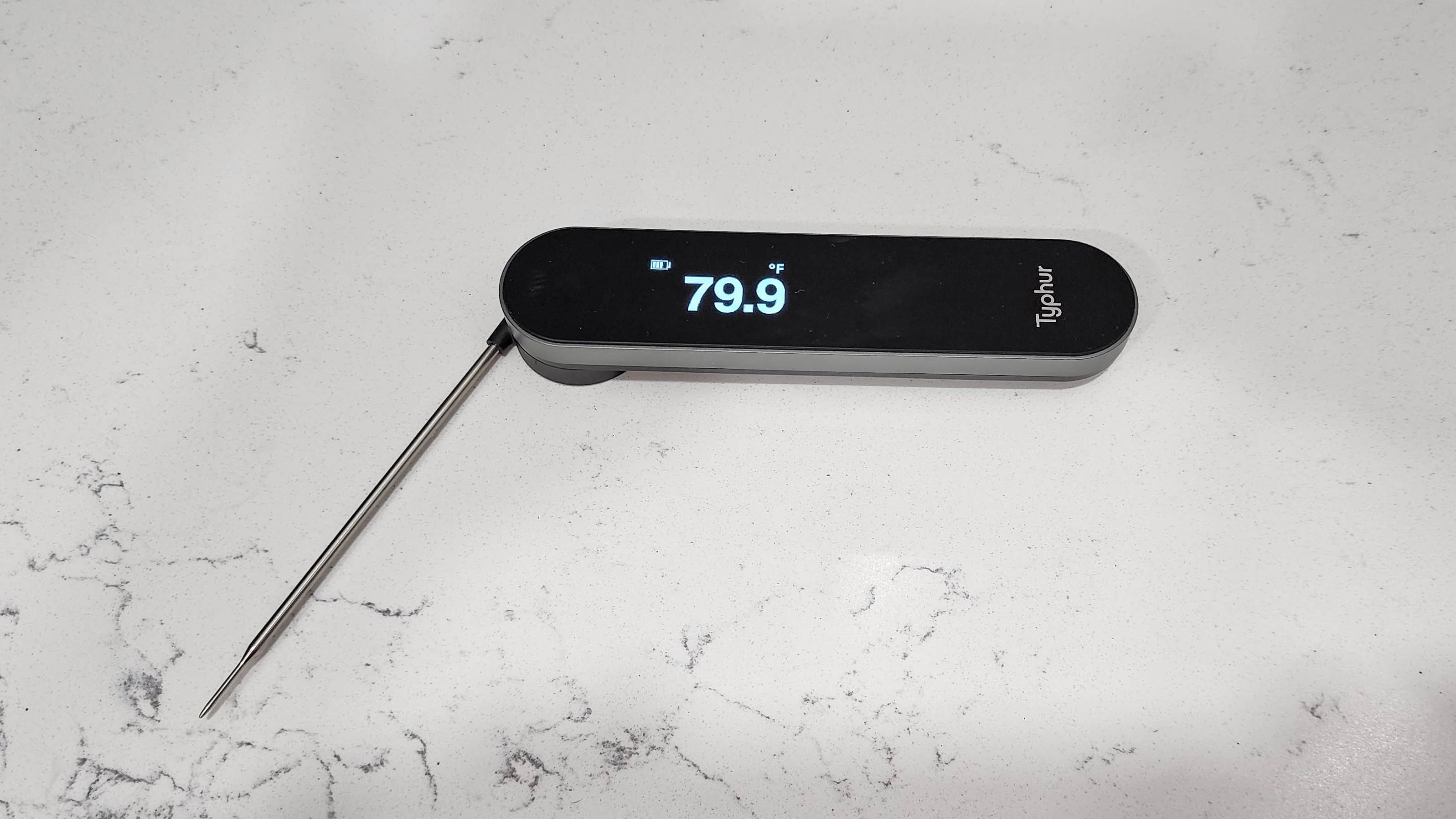
5. Typhur InstaProbe
Our expert review:
Specifications
Reasons to buy
Reasons to avoid
The Typhur InstaProbe promises to read food temperatures even faster than the ThermoWorks Thermapen One. And though it comes close in certain circumstances, a few design choices prevent it from overtaking ThermoWorks’s industry-leading instant-read thermometer.
The screen of the InstaProbe is an attractive black that makes it easy to read the high-contrast, backlighted digital display, however, its glossy nature and the outer casing can make it difficult to grip when wet or the air is steamy.
As for the display, it rotates, but only when the InstaProbe is held horizontally—you don’t get vertical readings. In addition, the probe, when folded, doesn’t click into the case; it just sits free on the back, making it possible to catch on things.
We found that the InstaProbe lives up to Typhur’s less-than-1-second speed claims and its accuracy claims in all instances but one: our boiling water test. While the best thermometers we’ve tested eventually settle on a number, the InstaProbe never did. It flipped constantly between numbers across a range of nearly 2.5° F—not that much, but enough to risk throwing off candy making or just missing that perfect medium rare.
Good as the InstaProbe is, you’re probably better off giving back that 0.5 seconds and getting more accurate overall readings and a better design with the ThermaPen one—unless you can’t live without the InstaProbe’s ultraswank look.
Best leave-in meat thermometer
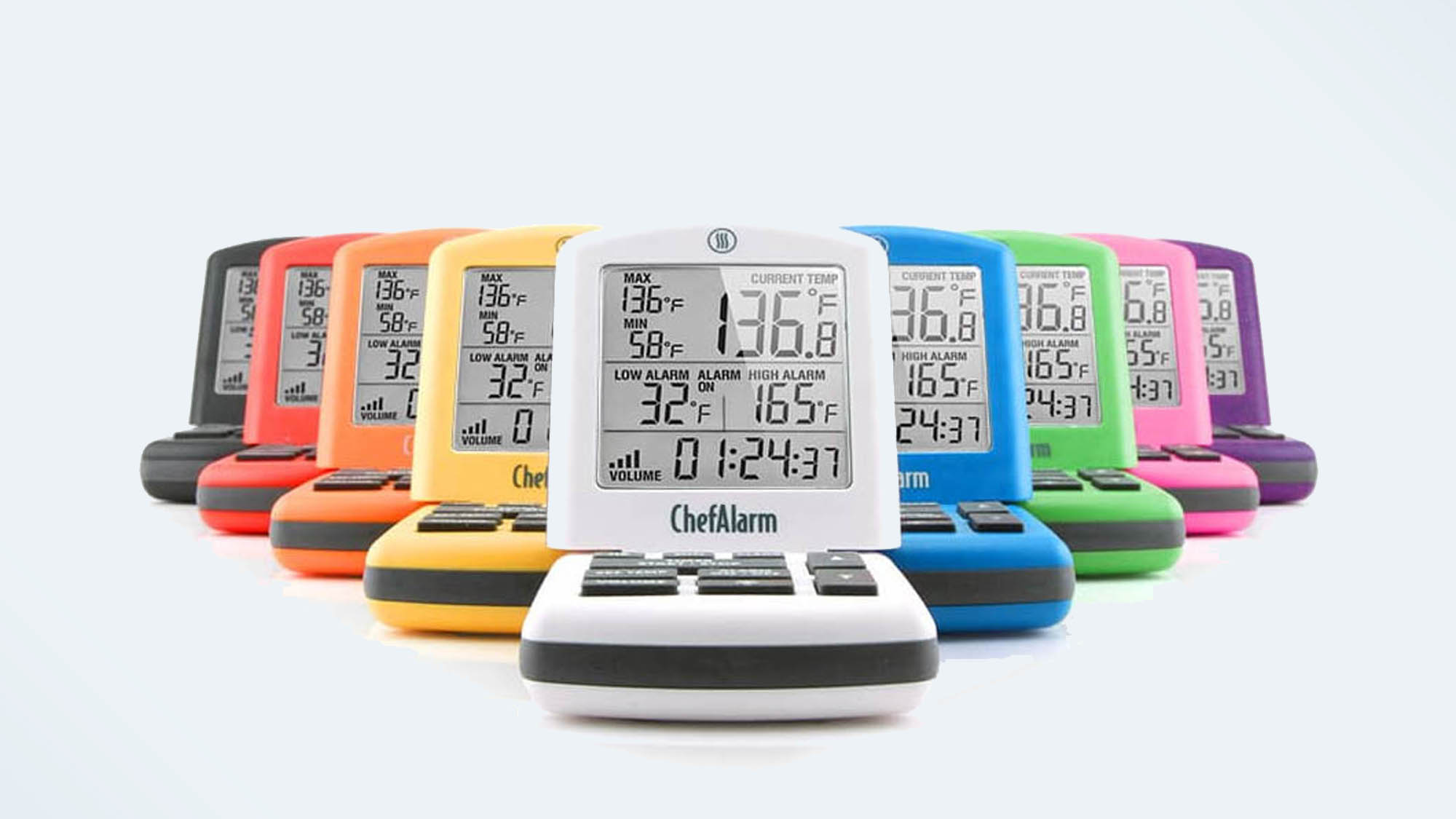
6. ThermoWorks ChefAlarm Cooking Thermometer
Our expert review:
Specifications
Reasons to buy
Reasons to avoid
Like its more ostentatious instant-read sibling, the Thermapen, the ThermoWorks ChefAlarm Cooking Thermometer does more, and does it better, than its leave-in thermometer competitors. If you don’t think you need anything to supplement your instant-read, the ChefAlarm may change your mind — especially if you roast a lot of big hunks of meat, deep fry, or make candy.
The 10 buttons on the ChefAlarm’s keypad are clearly labeled and arranged, so you’ll be setting your cook time, minimum and maximum temperatures, and alarms in seconds. But you can also adjust (or mute) the alarm volume or turn on a backlight that improves readability no matter how dark your cooking area. The wide Power switch is at the top rear of the unit, perhaps the most easily accessible place; below it are buttons for swapping the scale between Celsius and Fahrenheit and calibrating the thermometer, the latter a unique (but highly welcome) feature for this style. Two strong magnets on the back let you store the thermometer on your refrigerator or grill, just where you’re likely to need it most. And a handsome, zippered cloth carrying case is included for keeping the main unit, the probe, the clip, and the instructions all in one place.
The thermometer was also strongly accurate (within, at most, a half-degree) and consistent, whether spending hours in our “medium rare” water bath or just a few minutes in the volatile high heat of deep-frying peanut oil. The $65 price is admittedly a little steep, and maybe difficult to justify if you already have a good instant-read. But there’s not much else bad to say about the ThermoWorks ChefAlarm Cooking Thermometer.
Best budget leave-in meat thermometer
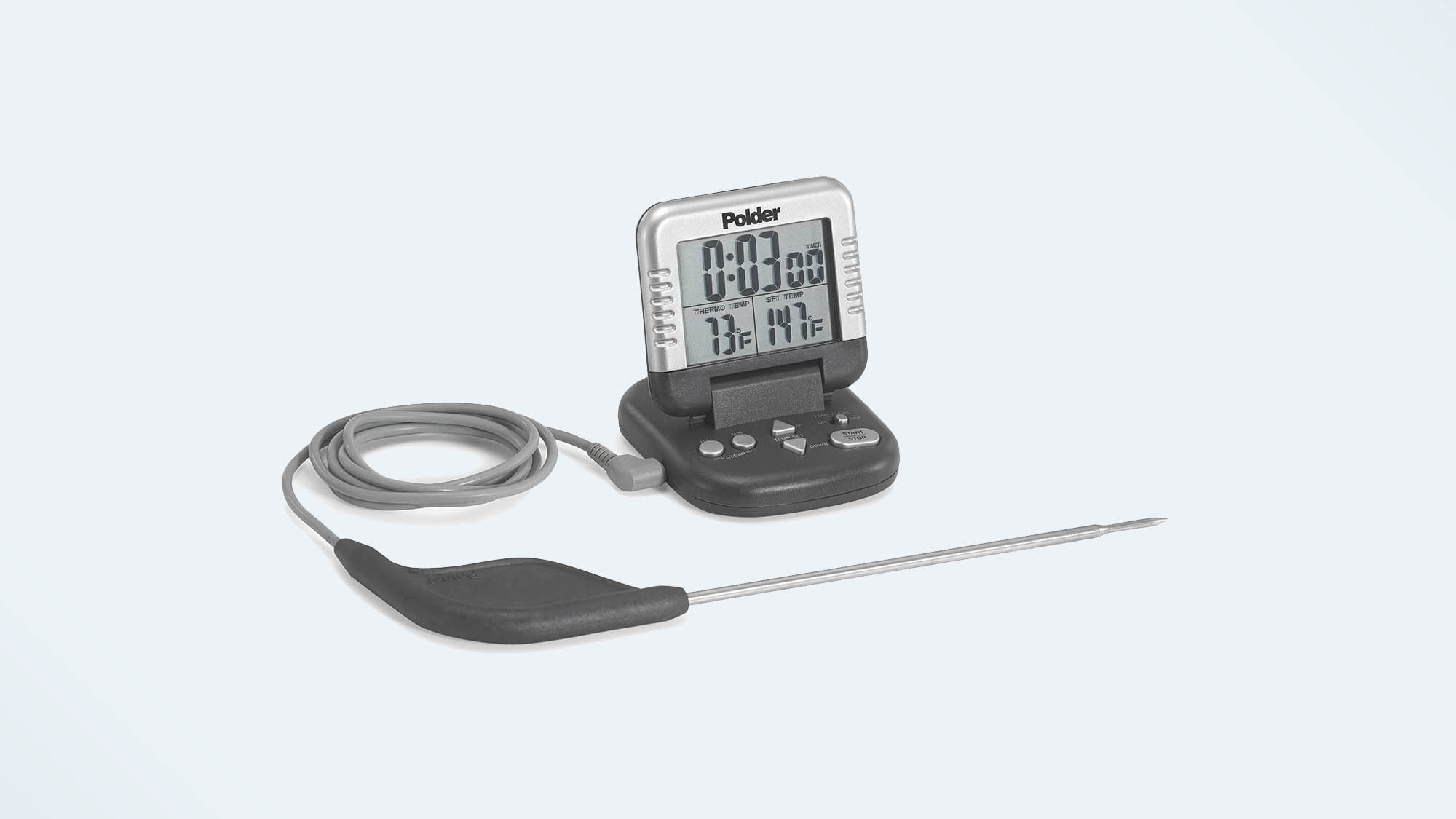
7. Polder Classic Digital In-Oven Thermometer & Timer
Our expert review:
Specifications
Reasons to buy
Reasons to avoid
We prefer external probe-style leave-in thermometers to their in-oven (and in-meat) cousins because they’re safer and significantly easier to read and program. This style of thermometer doesn’t get much easier than the Polder Classic Digital In-Oven Thermometer and Timer, a budget-friendly option that does all the basic stuff you need.
Setting your desired cooking time and temperature, or configuring the alarm to sound once your target temperature is reached, could not be easier. The alarm is piercing but clear and not unpleasant. And we noticed no problems with accuracy during our testing (though the thermometer measures only whole degrees, not tenths, so minute fluctuations were harder to detect).
Measuring less than 1.5 by 1.9 inches in area, the digital display is small, and the lack of a light can sometimes make it difficult to read. Though the bottom of the thermometer is a fine place to put the scale switch, as you’re unlikely to need to swap between Celsius and Fahrenheit very often, it’s a terrible location for the On-Off switch, which you’ll need every time you fire up the oven or grill.
All in all, the Polder Classic Digital In-Oven Thermometer & Timer doesn’t inspire many complaints, though aside from its attractively low price, it doesn’t inspire much excitement, either.
Best compact meat thermometer
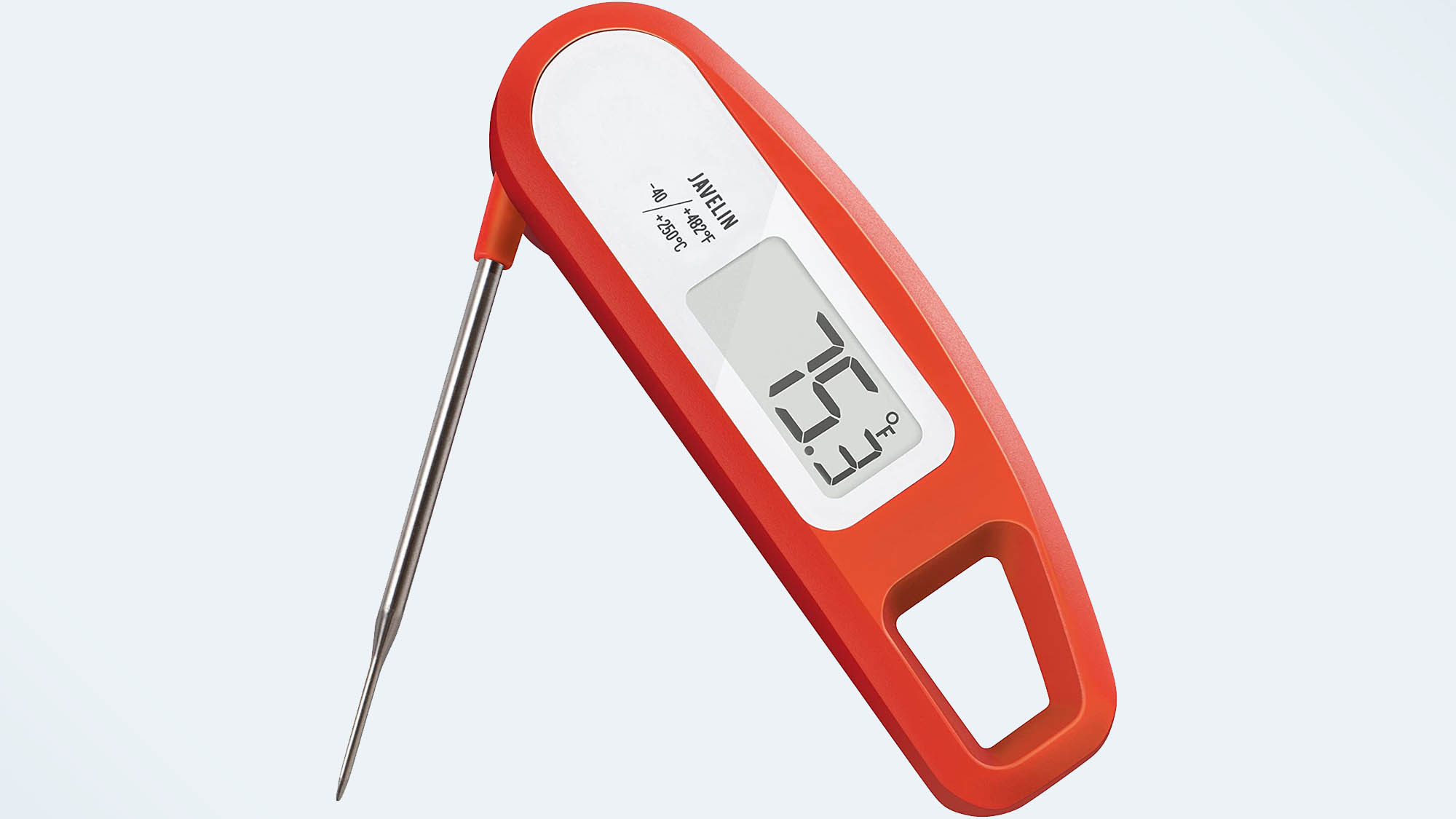
8. Lavatools Javelin
Our expert review:
Specifications
Reasons to buy
Reasons to avoid
The Lavatools Javelin isn’t quite small enough to attach to your keychain, but it’s close. Measuring just under 4.5 inches when closed, it’s far and away the shortest instant-read thermometer we tested. You won’t have to worry about it cluttering up your utility drawer, that’s for sure. (Although since it has integrated magnets, you can hang it up somewhere and not worry about its drawer presence at all.)
Although the Javelin’s size makes it easy to carry around, you have to take care to not cover the digital display with your hand, and because the probe measures just 2.8 inches, you’re going to have to get up close and personal with food you want to check — if you’re working in a deep pot or with a bulbous roast, it could prove both literally and figuratively painful.
The display doesn’t rotate or light up, two features that are much missed, but is to be expected at this budget price point. The thermometer is also powered by a 3-volt CR2032 battery, rather than one or two ultracommon AAA batteries, like every other model we looked at.
The Javelin is fast, with read times between 3 and 4 seconds, and although it’s not perfectly accurate, in our tests it was never off by more than 0.6° F, which should be fine for almost any home application. Affordable at just $26, the Javelin isn’t a bad buy, but it’s a reminder that, although good things frequently do come in small packages, in the kitchen it’s best to stay as far away from the heat as you can.
Best dial meat thermometer
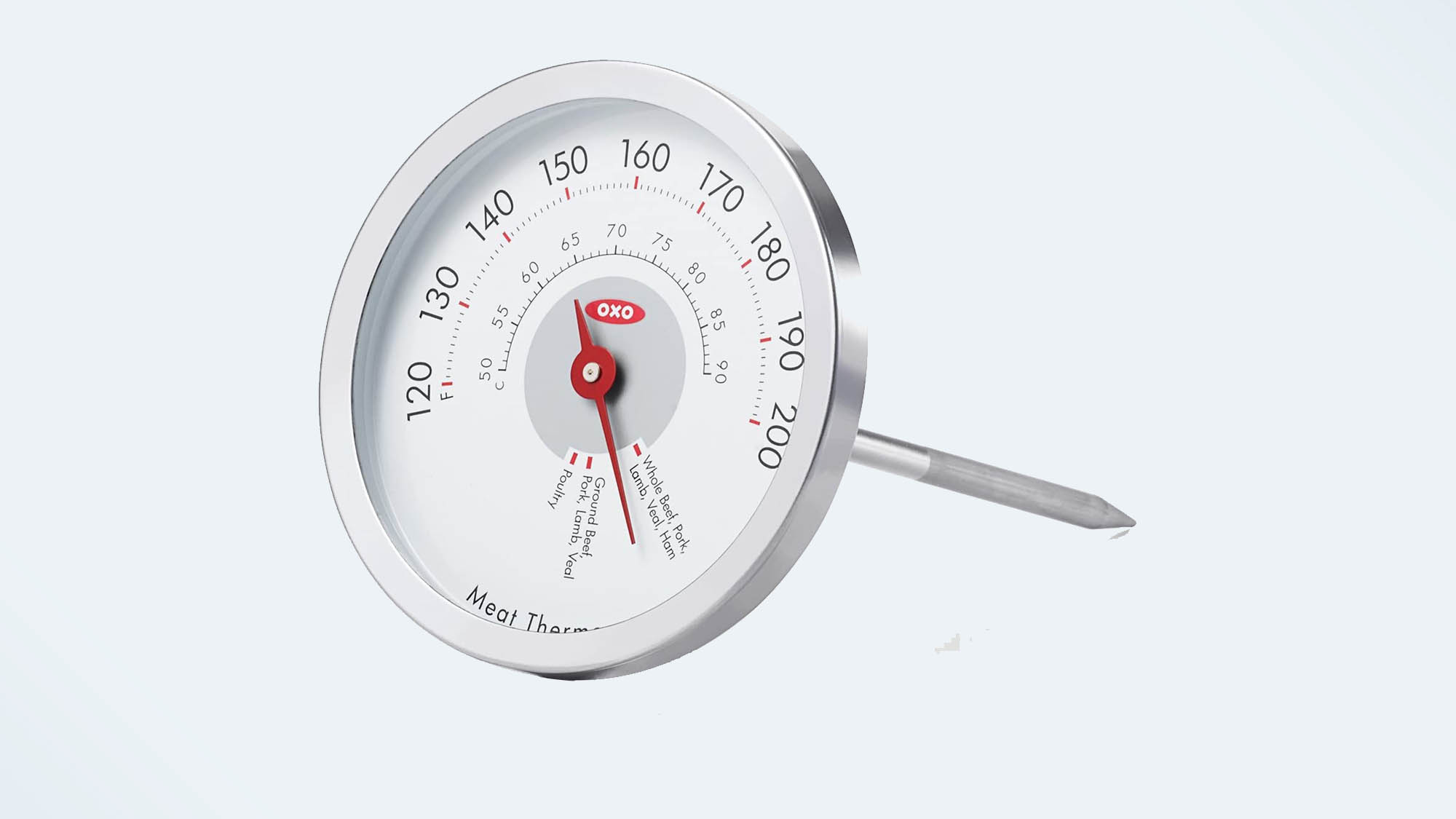
9. OXO Good Grips Chef’s Precision Leave-In Meat Thermometer
Our expert review:
Specifications
Reasons to buy
Reasons to avoid
The OXO Good Grips Chef’s Precision Leave-In Meat Thermometer reminds me a lot of the kind of the meat thermometer my parents had while I was growing up — but it’s even easier to use and read. The textured bottom of the probe tells you exactly how far into the meat it needs to be inserted, and the 2.6-inch-diameter meter is easy to read, with temperature waypoints every 10 degrees between 120 and 200, markings in both Fahrenheit and Celsius, large type, and even a basic guide to safe cooking temperatures right on the dial. The slide-off probe cover contains the same numbers, plus explanations of the temperatures at which you can expect to hit medium rare, medium, and well done for a variety of different meats. As the product’s name suggests, OXO gives you a good grip on meat cooking.
The biggest problem we ran into while testing was the thermometer’s length. The instructions say to insert the thermometer to the edge of the textured area, but that’s only 2.2 inches in—not far enough to deal with big roasts. And because that leaves more than 3 inches of the thermometer sticking out above the meat, you may have trouble getting proper clearance in your oven. (We were able to do okay inserting it straight into the side, but it was a chore, and the probe didn’t want to stay in that position.)
Priced at just $16, the OXO Good Grips Chef’s Precision Leave-In Meat Thermometer is an inexpensive way to guarantee your meat is safely cooked to your desired level of doneness. Sure, it’s old-fashioned, but if meat is all you need it for, and you can negotiate into and out of your oven, it’s a fine thermometer my parents would have loved to have when I was a kid.
Most flexible meat thermometer
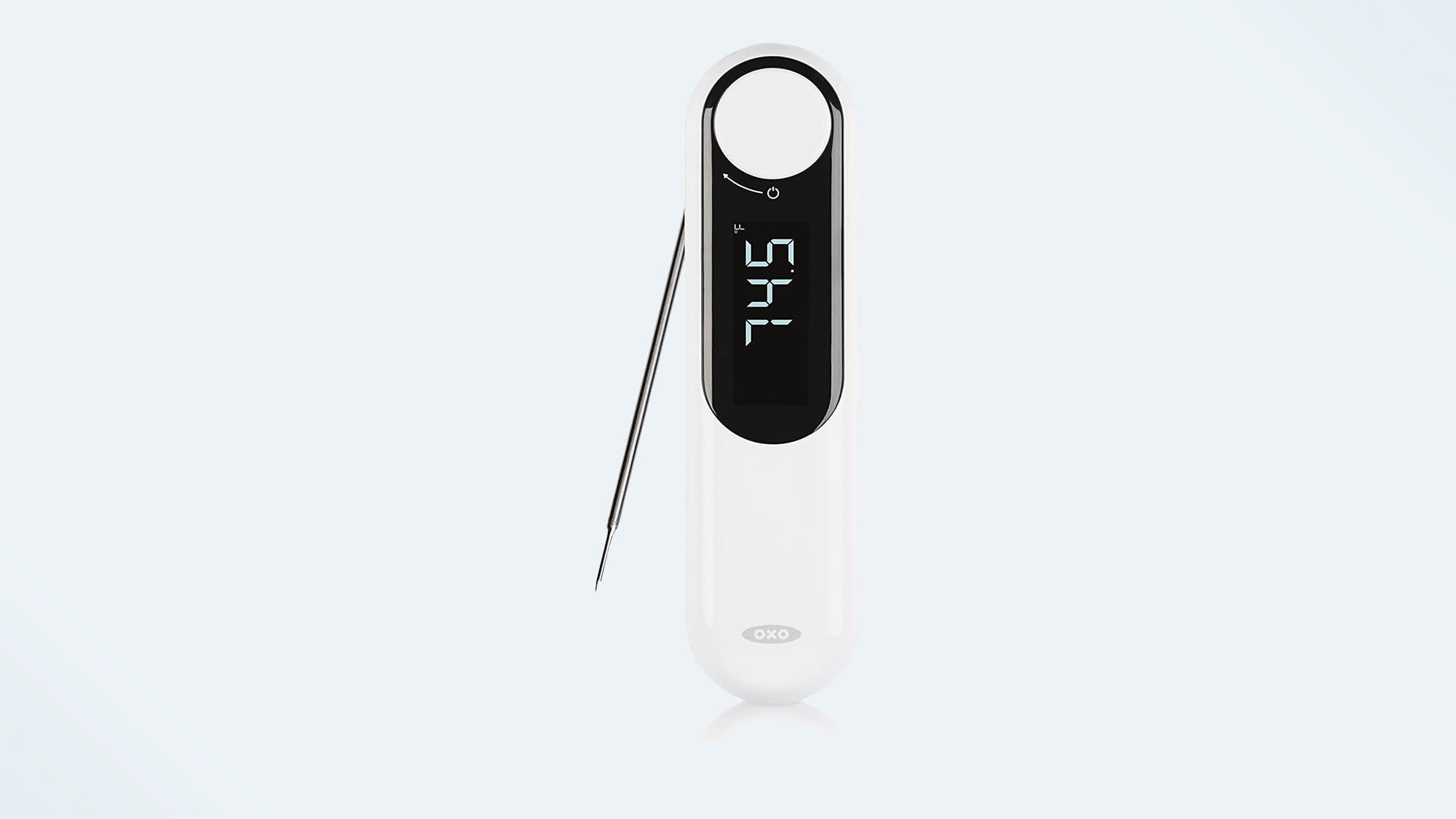
10. OXO Good Grips Chef’s Precision Thermocouple Thermometer
Our expert review:
Specifications
Reasons to buy
Reasons to avoid
The OXO Good Grips Chef’s Precision Thermocouple Thermometer looks like exactly the instant-read thermometer you’d expect OXO to make. It’s big, stylish and black and white, with few obvious standout characteristics. Like so many of the other kitchen products in OXO’s all-consuming line, it’s quite a bit better than you may expect — if not perfect.
It’s long (just past 6.5 inches) and oval in shape, but also thick (0.8 inch) and with rounded edges, so it’s comfortable to hold. Its bidirectional rotating display uses white digits on a black background, which makes it easy to read in any amount of light. Most interestingly, the temperature probe rotates out to 225 degrees instead of the usual 180, so you can comfortably take temperature readings in any position, using your dominant hand, no matter which it is. Even the ThermoWorks Thermapen doesn’t do this.
Though fast, it’s not the most accurate of the thermometers we tested, as it was routinely off by about a half-degree. Its bigger hurdles relate to usability. The shiny body is overly slick, the integrated knob for opening the probe is harder to use than just pulling it out by the metal and if you want to change either the scale or the temperature resolution, you have to move two inset switches in the bottom of the battery case. This was an unusually difficult process we couldn’t accomplish with the recommended Phillips screwdriver (we needed a toothpick).
Maybe the most unfortunate drawback of the OXO Good Grips Chef’s Precision Thermocouple Thermometer is its price. If it were less expensive, it would be a more compelling buy, but listing for $104, just barely below the notably superior Thermapen One, it doesn’t compare. Our recommendation: root through your couch cushions, find that extra penny, and get the Thermapen One instead.
Best multi-probe meat thermometer
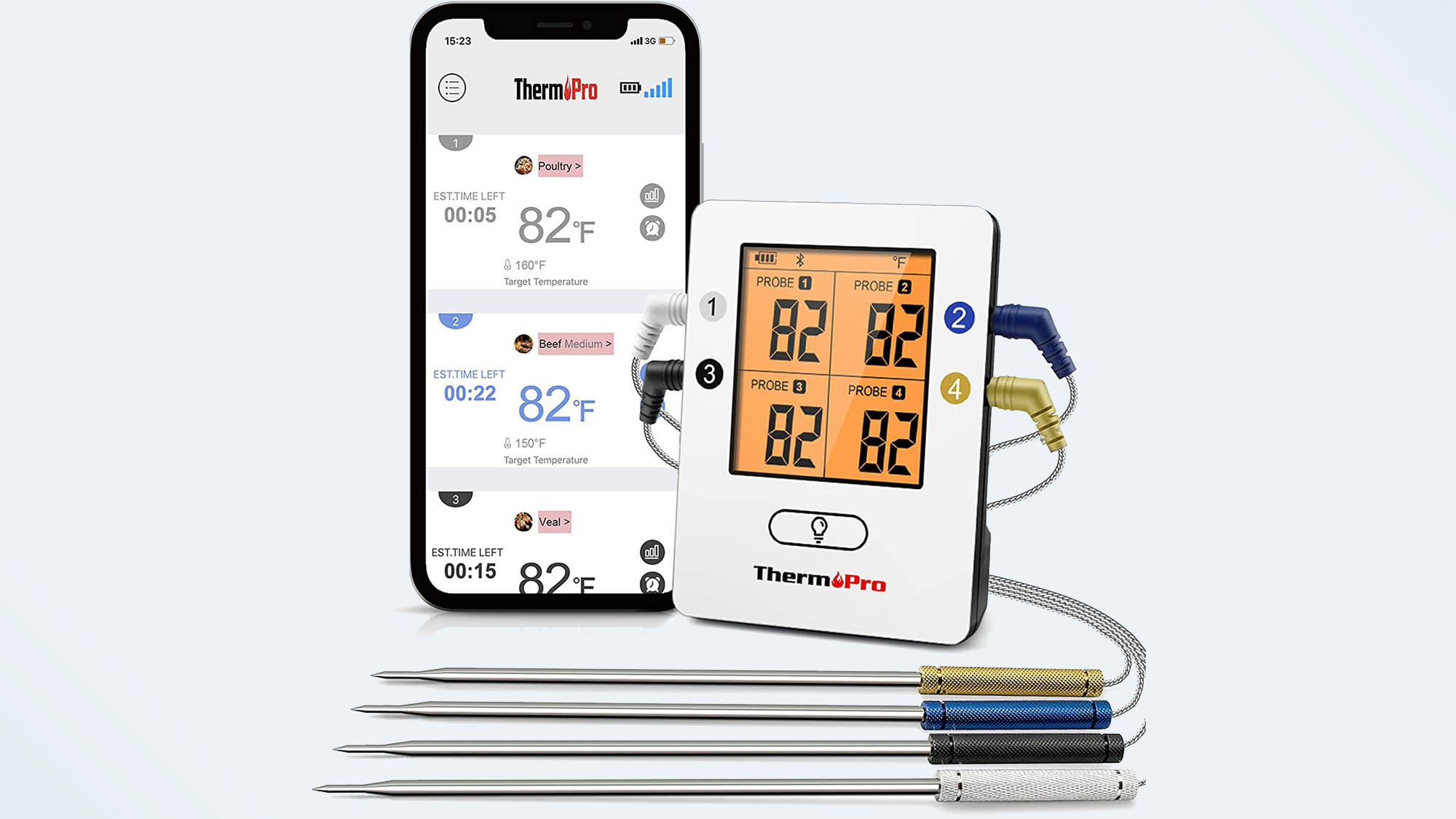
11. ThermoPro TP25 4 Probe Bluetooth Remote Meat Thermometer
Our expert review:
Specifications
Reasons to buy
Reasons to avoid
The ThermoPro TP25 is a great option if you frequently cook for large (or picky) groups, when a single thermometer might not do. There are four separate probes, allowing you to keep track of four different pieces of meat from a single display.
You need to connect the unit to the companion smartphone app, but once you do, you can juggle different cooking times to suit everyone. But this approach does have it's downsides. It's quite fiddly to plug in all four probes, for example.
And the app is hard to navigate — it feels like a half-finished prototype that somehow snuck out the door. The presets are also a little off; the medium-rare beef is set to a much-too-high 140° F, which left us with a medium joint instead.
But we did find that the temperature was consistent and accurate during cooking, except when it ran out of battery and needed to be plugged in, causing a huge fluctuation in recorded temperatures.
The fact that it can monitor four separate meats at a reasonable cost makes it an attractive option if you're cooking for a group. But keep in mind that the extra time needed to get the app's settings right (and keeping the battery topped up), could be spent with your guests instead.
Also tested
To make sure we only recommend the very best meat thermometers, we test a lot more than make it into our main roundup. But that doesn't necessarily mean they're a bad choice, so if you're after more options, here are those we've also tested.
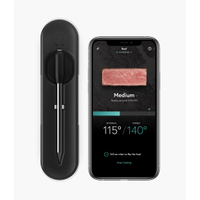
Yummly Smart Thermometer
The Yummly Smart Thermometer gives you plenty of functionality, and you can happily leave your food to cook while the app gets to work. However, on testing we founding it time consuming to set up and the probe was short — measuring just 3 inches, making it difficult to insert sufficiently into large joints of meat.
Cosori Smart Meat Thermometer
The Cosori smart meat thermometer is a neat gadget that can be left in the protein during the whole cooking process. However, during our testing we found it performed well on small protein sizes, but was disappointing when cooking a whole chicken.
Read our full Cosori Smart Meat Thermometer review
How we test the best meat thermometers
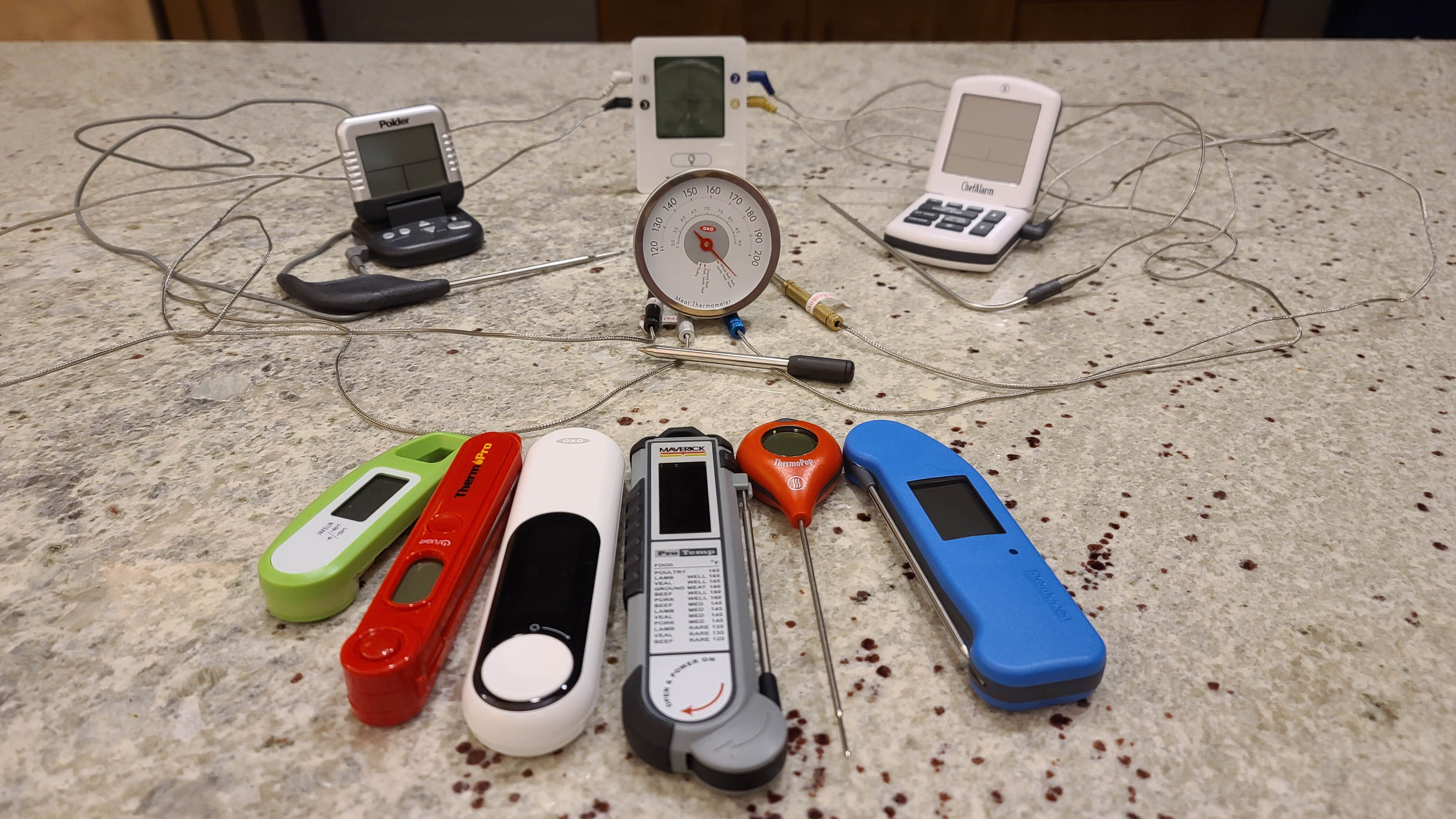
To assess the kitchen thermometers, we put them through a series of objective and usability tests that would allow us to determine their overall technical capabilities and how well they worked in everyday kitchen tasks.
To measure speed and accuracy of instant-read thermometers, we set up water baths at three different temperatures: one filled with ice water at just barely over 32° Fahrenheit, one with water kept at a constant temperature (approximately 125°, or where you’d expect to pull a piece of beef for medium rare doneness) via a sous vide machine, and a pot of water boiling at just over 204° (the boiling point affected by the altitude of our test space).
We dipped each thermometer’s probe in the water, timed how long it took the temperature reading to stabilize, and compared its temperature reading with one from a freshly calibrated, lab-quality reference thermometer.
For digital remote-style probe thermometers with cables, we used the 125° water bath and the reference thermometer to track temperature consistency over a period of 5 hours.
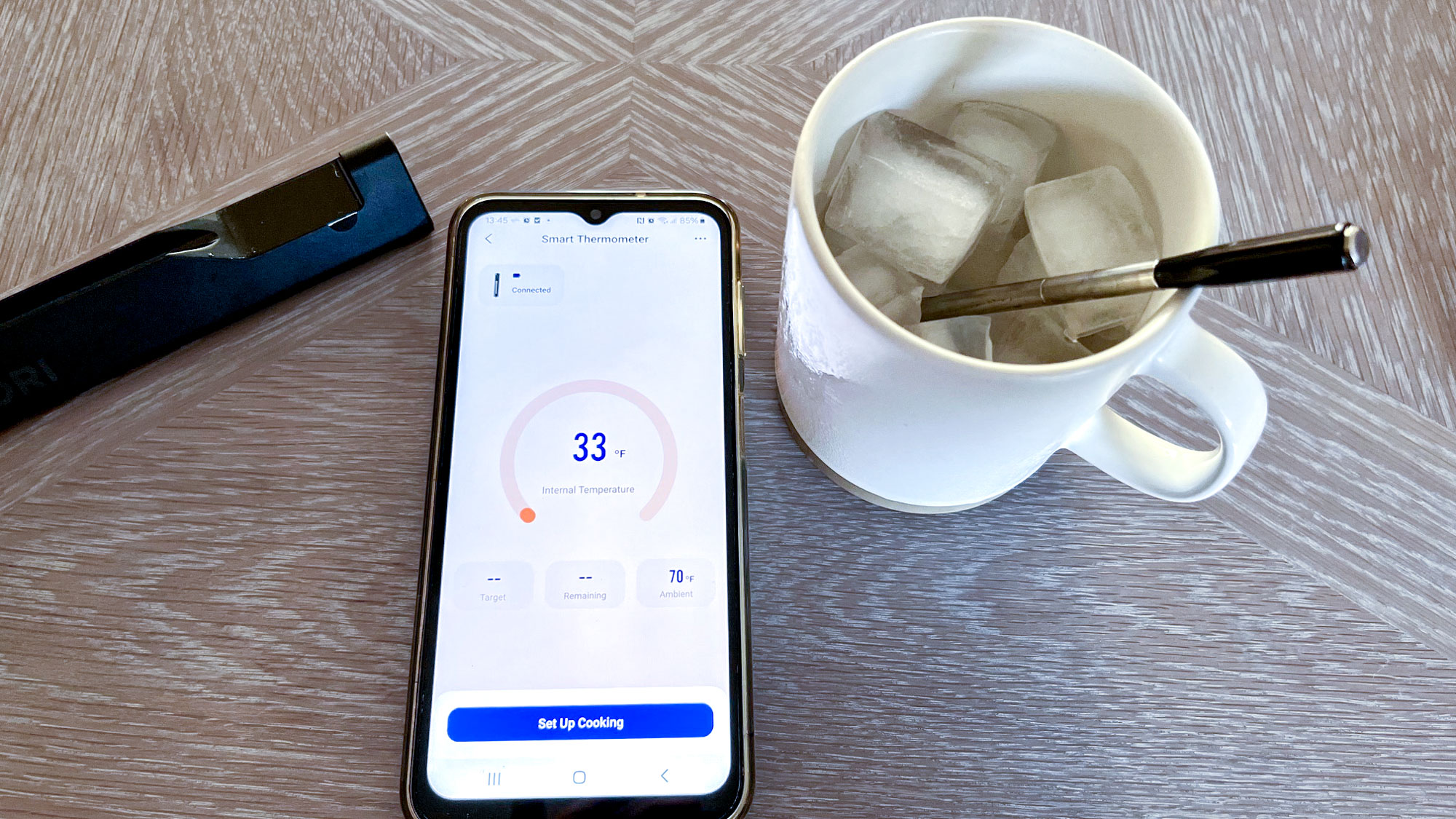
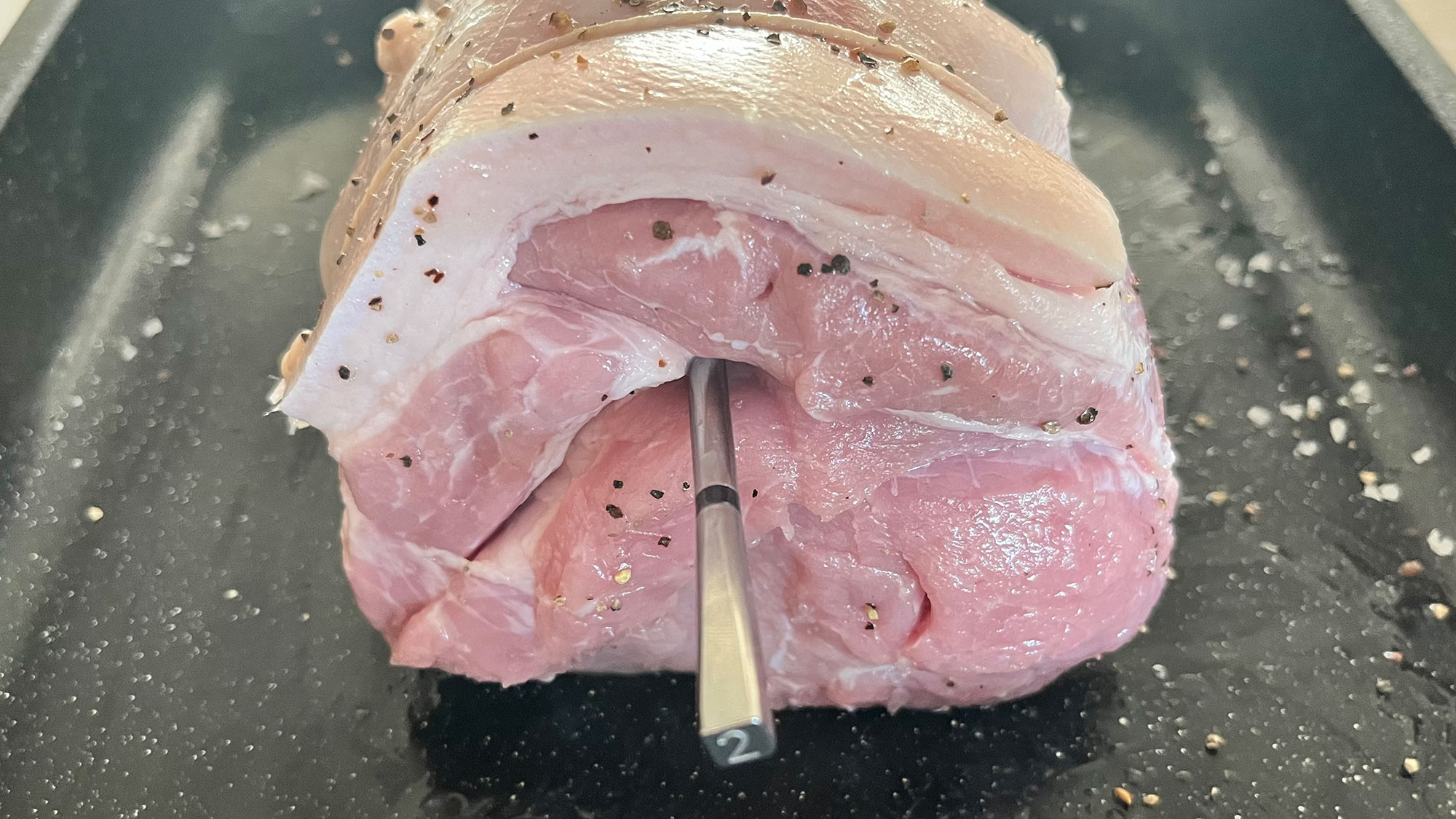
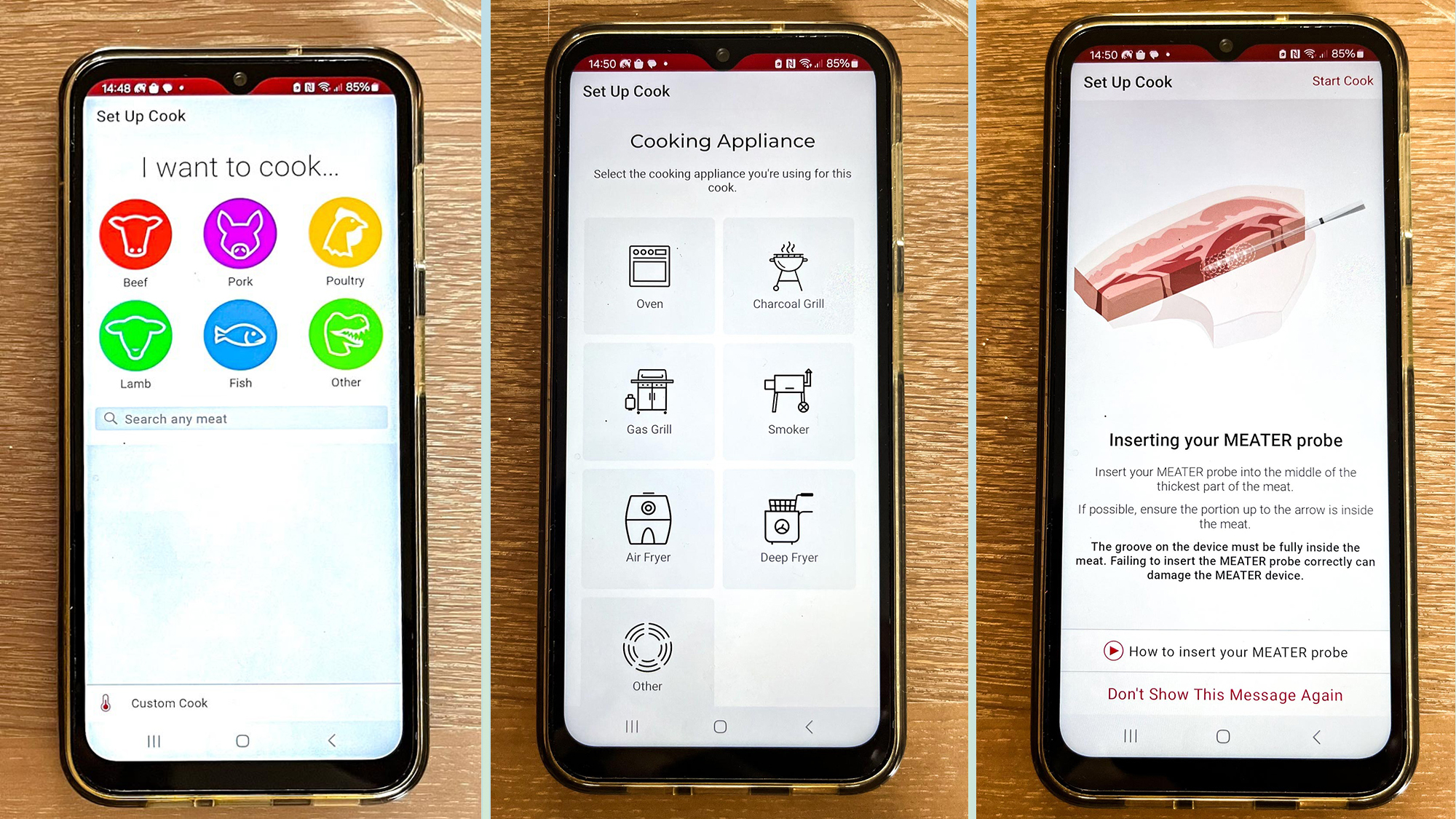
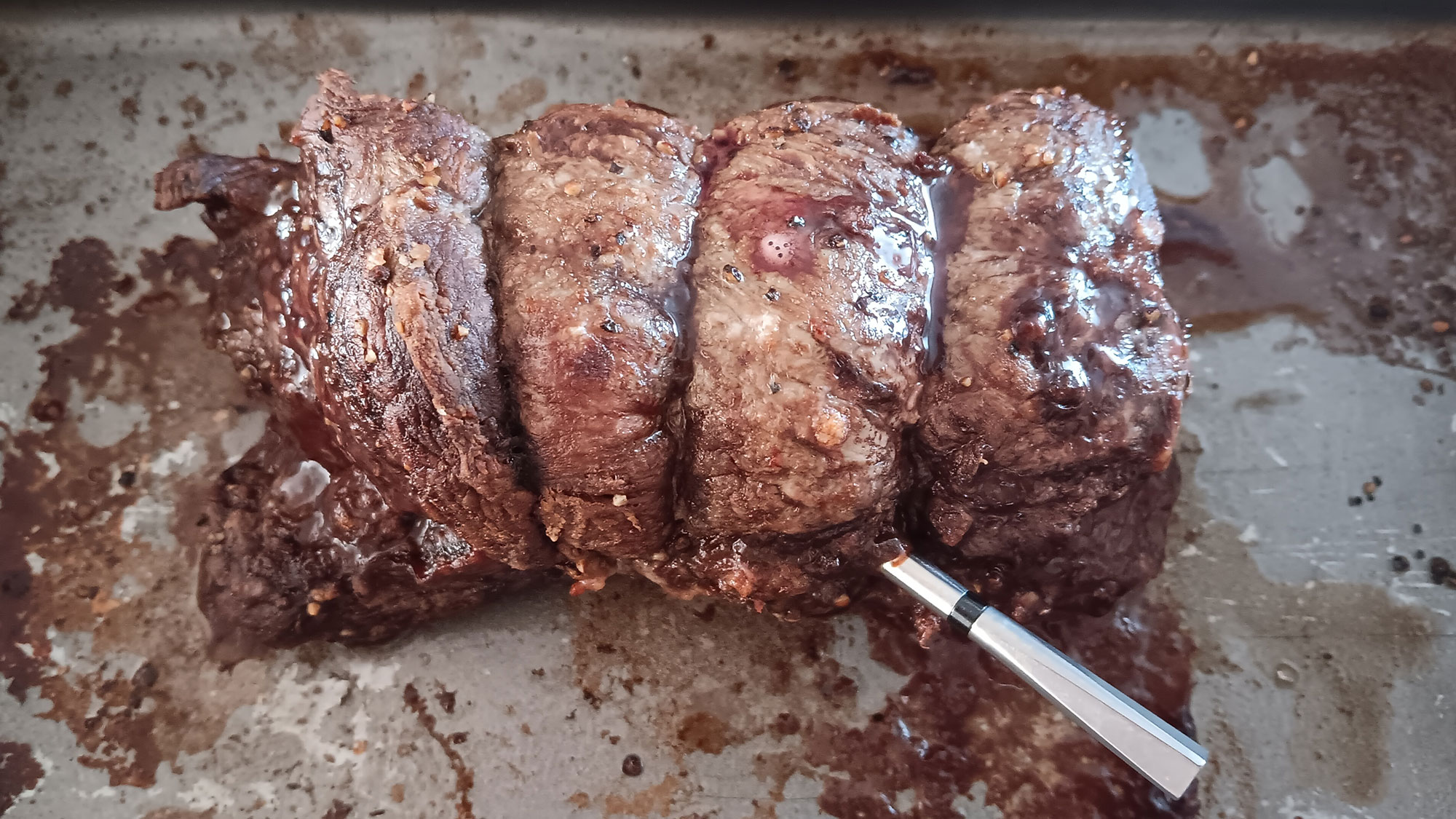
We then enlisted the thermometers for an all-day cooking marathon, roasting four-pound slabs of top sirloin until they reached medium rare. For instant-read and clip-on thermometers, we also deep-fried French fries and tortilla chips, in each case using multiple units to compare accuracy and usability.
Along the way, we tried as many of the thermometers’ special features (such as temperature alarms or mobile apps) as possible, so we could mimic how they would function in the real world.
Once we were finished cooking, we also went through the process of cleaning and storing them, to see how well they could withstand those everyday maintenance.
Finally, any special features, such as smart connectivity or multiple probes, were tried out. We then compiled our results to find the best meat thermometers for every situation.
How to choose a meat thermometer
Style
There are a number of different types of thermometer on the market, and what you like to cook will be the primary decider for which style you buy. If you rarely cook anything more than roast beef or chicken, a simple, leave-in meat thermometer may do the job (and, in most circumstances, will be highly affordable). You can up your game with a digital remote probe-style thermometer, which thanks to cabled probes lets you see the meat’s current temperature from outside the oven, set temperature maximums and alarms, and more. These are also good for deep frying or sugar work, if you have a model that clips on to the side of the pan. If you’d prefer a single, go-everywhere model, an instant-read can work in all these places, though these make it more difficult to chart temperatures over time.
Analog or digital
Analog thermometers are typically less expensive than digital, but they’re also invariably slower and usually more difficult to read. This matters less with a thermometer you’re going to leave in the Thanksgiving turkey for a few hours than it does with a thin steak or caramel sauce, where every change in degree can spell the difference between success and failure. As some good digital thermometers are available for $35 or less, you’re better off getting one of those if you can.
Instant-read features
The most important features for instant-read thermometers are the size and design: you want one that isn’t too small or too big, that has an easy-to-access probe, and that you can firmly grip even if steam or grease interfere. Many newer instant-read models also have displays that light up or rotate in two or four directions (so you can see the temperature no matter where you or the food are located); these are helpful, but may add a lot to the final price.
Number of probes
Most remote probe-style thermometers only include one probe, so you can only track the temperature of a single dish at a time. Some, however, include up to four probes, letting you prepare wildly different recipes with just a single device. This is handy, particularly if you entertain a lot or frequently prepare multiple meats at once, but can also be logistically difficult (as you may have a lot of probes and cables to organize) or expensive (for models where each probe is sold separately).
Resolution, scale, and calibration
Home thermometers measure in either whole degrees or tenths of a degree; make sure you know how much detail you want, as not every thermometer does both — and those that do should make it easy to switch between the resolutions. Similarly, the thermometer should display the temperature in both degrees Fahrenheit or degrees Celsius, so you can use it no matter where you live, and allow you to easily flip between the two. Though it’s not a necessity, calibration is an excellent additional feature; by measuring a known temperature (such as ice water) and adjusting the readout accordingly, you can continue using your thermometer even if its initial accuracy diminishes over time.
Smart functionality
Smart thermometers can connect with a mobile app so you can follow what’s happening in the oven even when you’re away from the kitchen. This is still something of a gimmick, and is of limited utility unless you’re making a long-cooking dish that might suck up most of your day. But, apps that allow long-term temperature tracking and have presets for certain kinds or cuts of meat may help take some of the guesswork out of the process. Use one that’s customizable, though, as your cooking equipment and personal preferences can be difficult to hard-code into any software.
FAQs
Is a meat thermometer worth it?
With meat thermometers costing as much as $100, you might ask yourself if they’re really worth the expense. It all comes down to what you cook and how precise you want to be with your cooking. If you often prepare thick joints of meat for guests, a meat thermometer can guarantee the quality of the results without cutting into the meat and losing some of the moisture. Similarly, if you need to cook to a finishing standard you’re not used to, such as well-done, a meat thermometer can help you achieve the perfect internal temperature without overcooking.
A meat thermometer can be used in all sorts of cooking circumstances — you can check whether ingredients have cooked all the way through and confirm that the food is safe to eat. Consequently, with one of these, you don’t have to worry so much about foodborne illnesses. Ultimately, a meat thermometer can be useful in more ways than you’d think. At the very least, it’s good practice to have a basic model in your kitchen drawers, to make sure any meat or eggs you cook are safe to consume.
How much should you pay for a meat thermometer?
The price of a meat thermometer can range from less than $10 to over $100. Naturally, the more you spend, the more features you’re going to get, such as app connectivity and additional probes. However, that’s not to say you can’t get a good meat thermometer for a good price.
Decide on your budget as well as what you need before browsing for a new thermometer. Consider what you will use it for and whether the extra features would prove useful. If you want one from a premium brand, such as ThermoWorks, be prepared to pay a premium price. However, even ThermoWorks offer options for those on a budget, such as the ThermoPop, so be sure to do your research before you invest.
Sign up to get the BEST of Tom's Guide direct to your inbox.
Get instant access to breaking news, the hottest reviews, great deals and helpful tips.

Camilla Sharman has worked in publishing and marketing for over 30 years and has covered a wide range of sectors within the business and consumer industries both as a feature, content, and freelance writer.
As a business journalist, Camilla has researched articles for many different sectors from the jewellery industry to finance and tech, charities, and the arts. Whatever she’s covered, she enjoys delving deep and learning the ins and out of different topics, then conveying her research within engaging content that informs the reader. In her spare time, when she’s not in her kitchen experimenting with a new recipe, you’ll find her keeping fit at the gym. In the pool, stretching at a yoga class, or on a spin bike, exercise is her escape time. She also loves the great outdoors and if she’s not pottering about in her garden, she’ll be jumping on her bike for a gentle cycle ride.
- Millie FenderSenior Homes Editor
